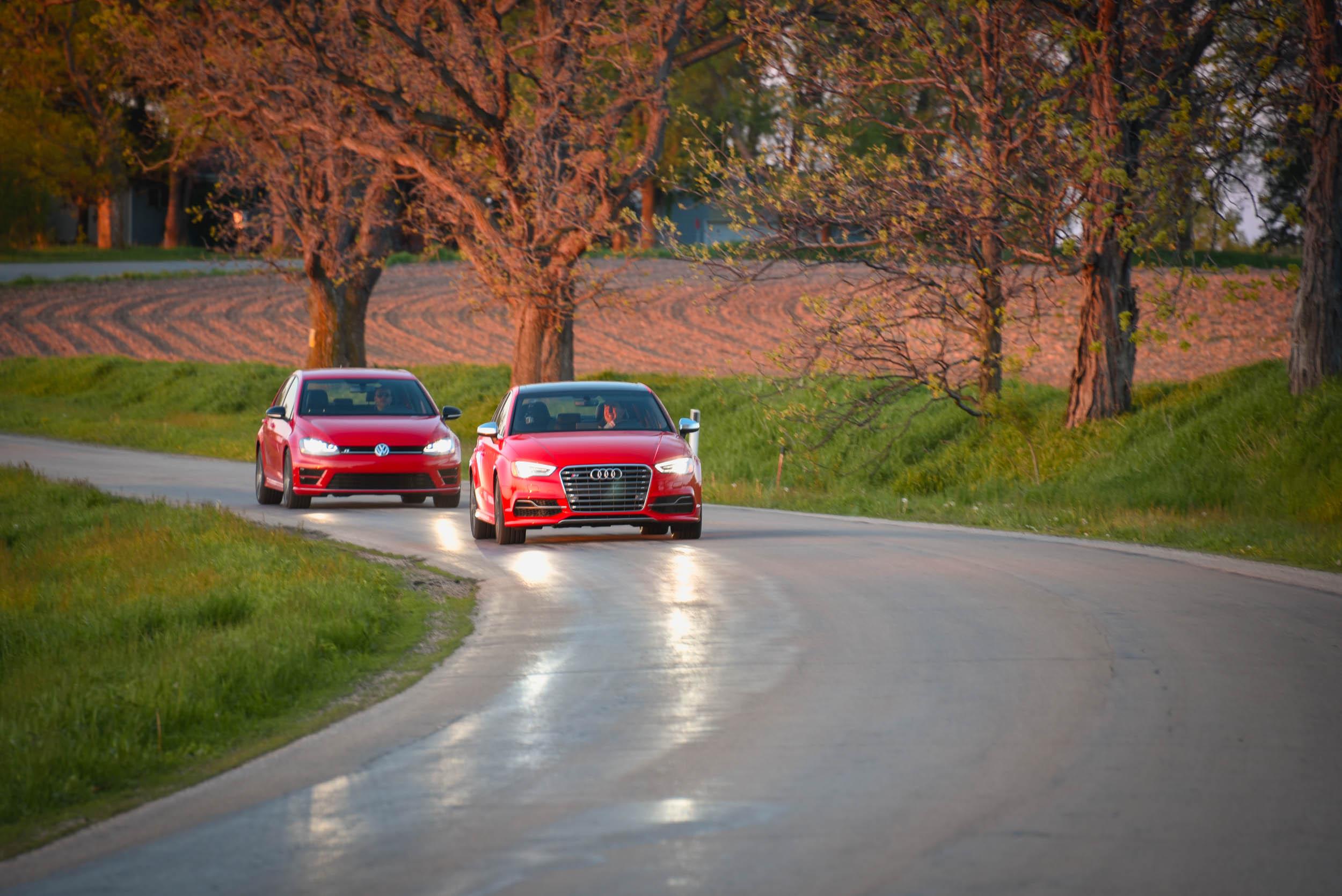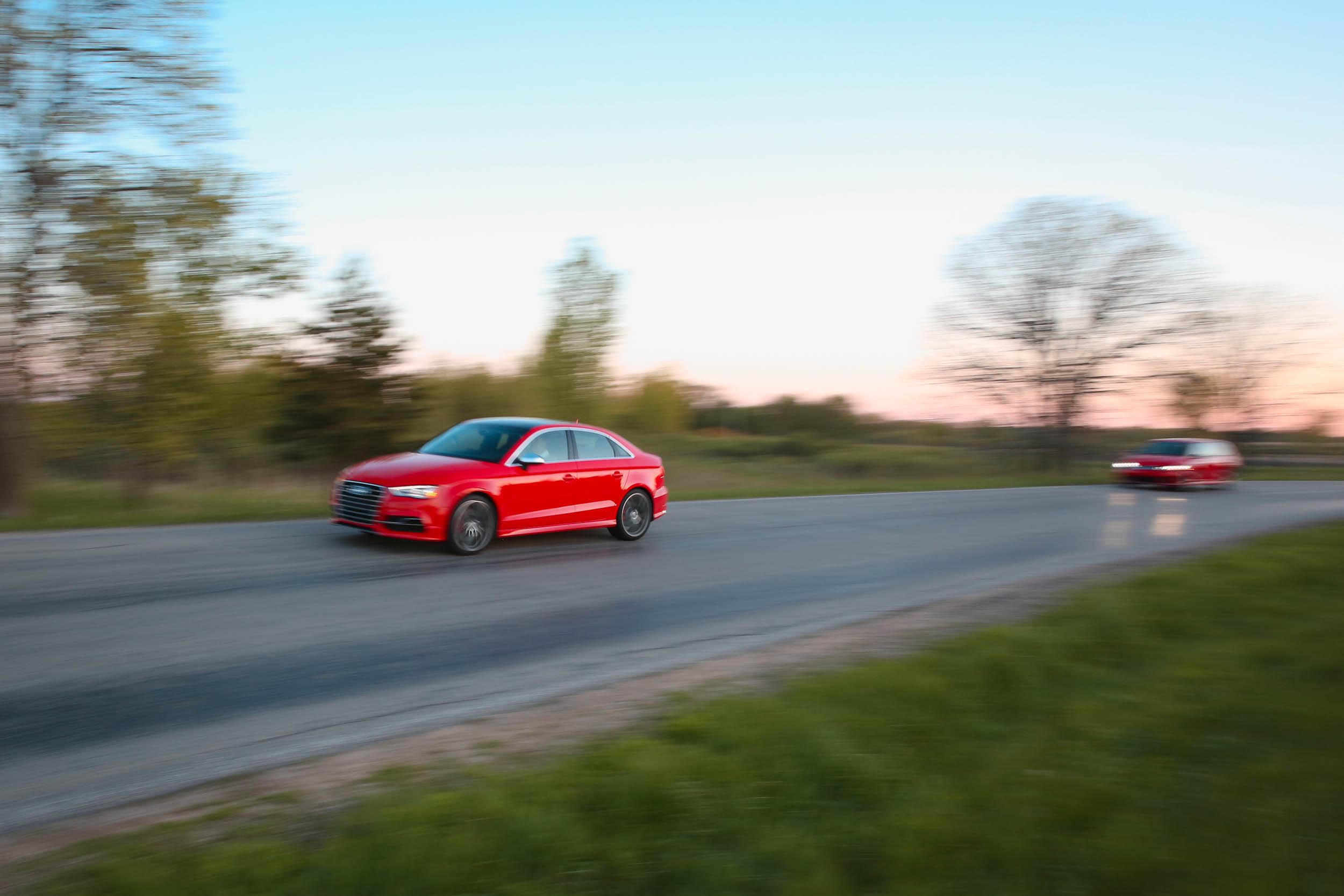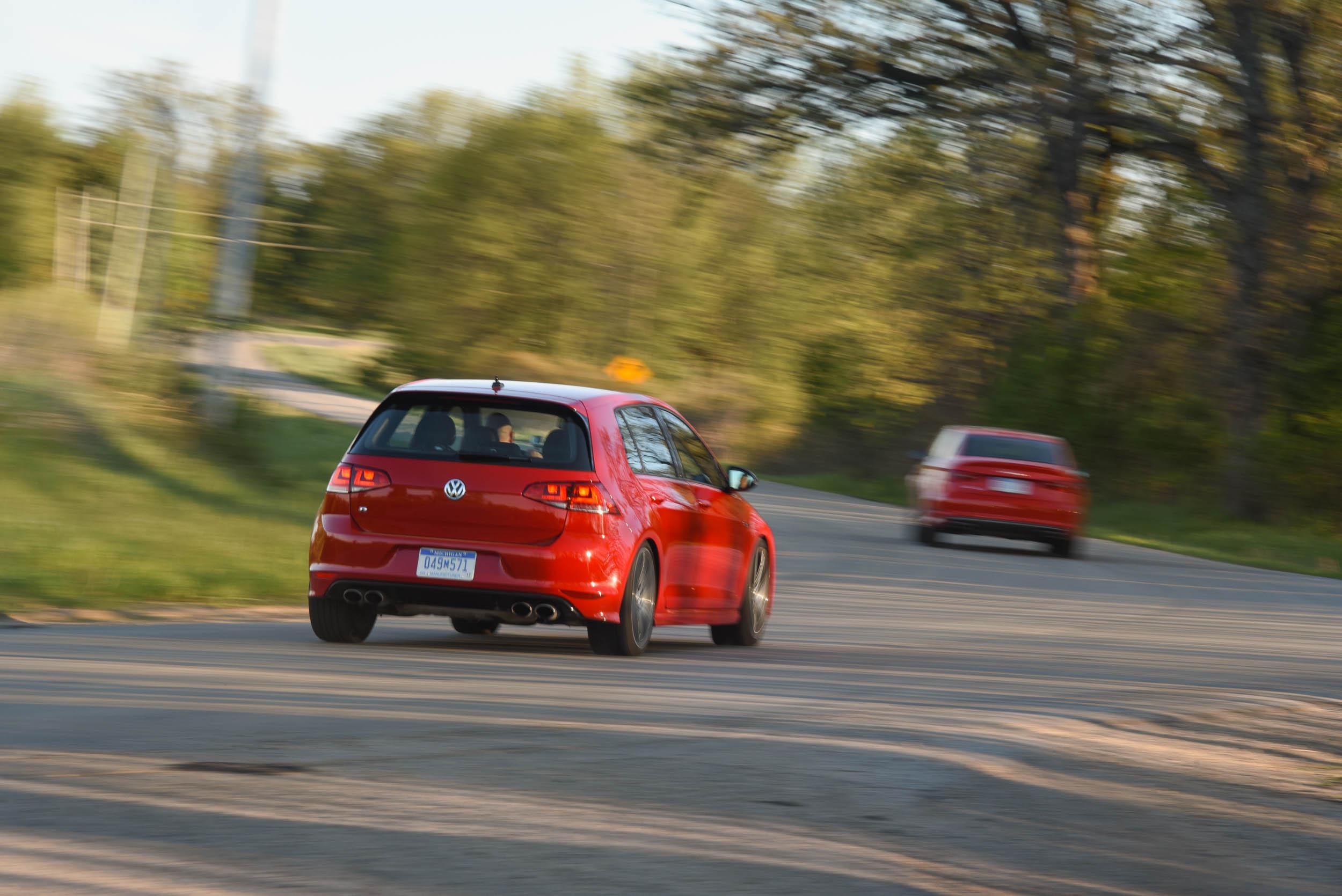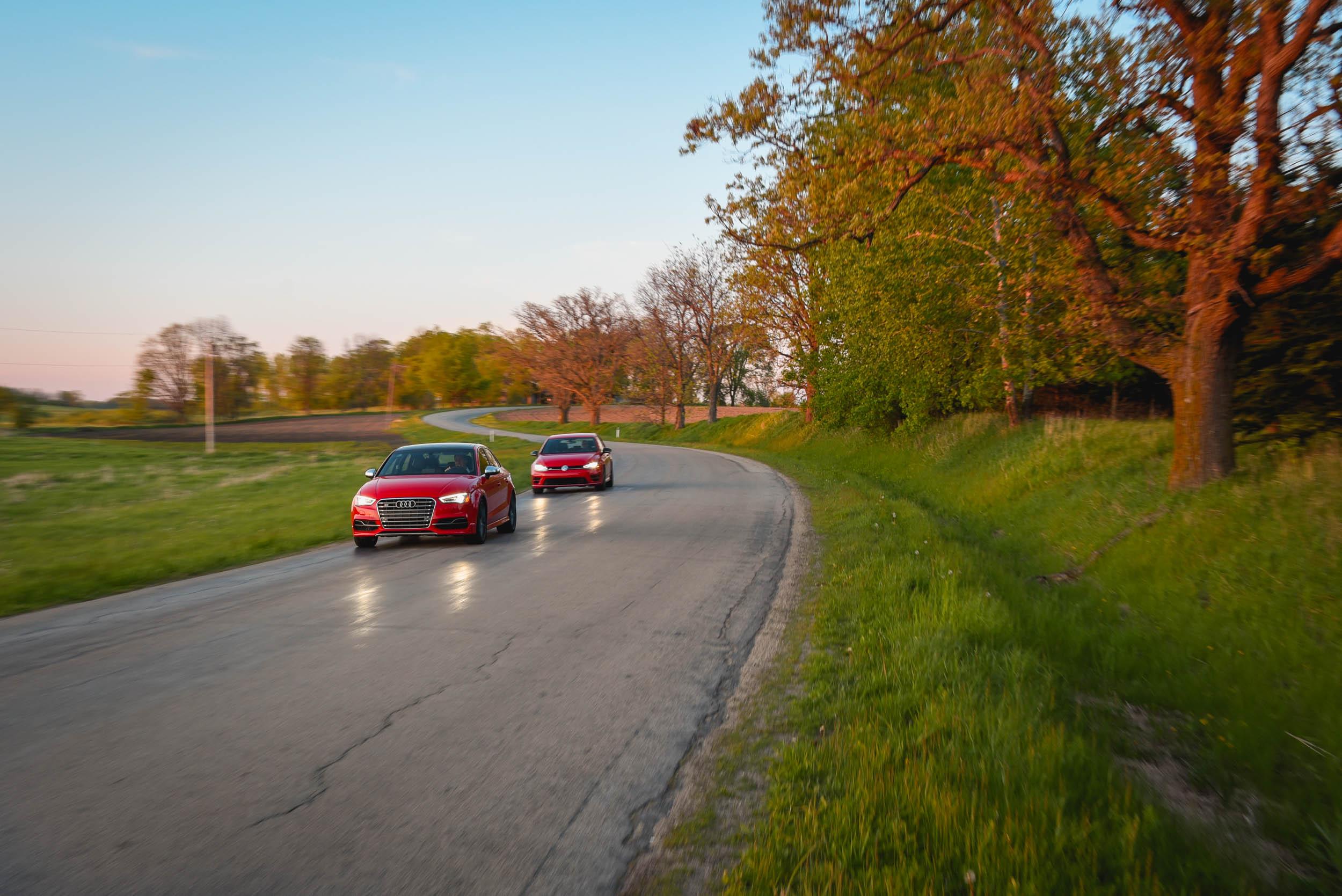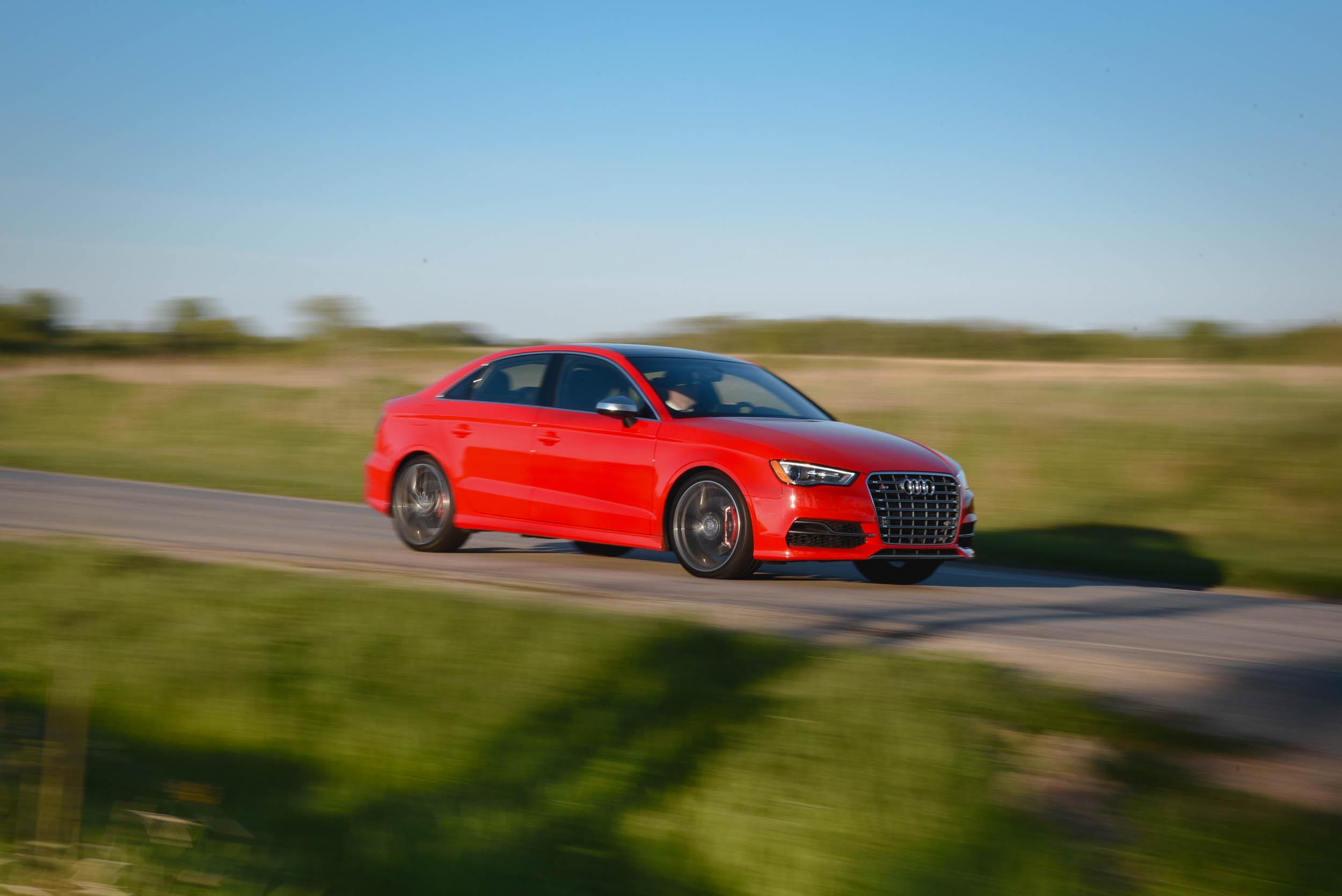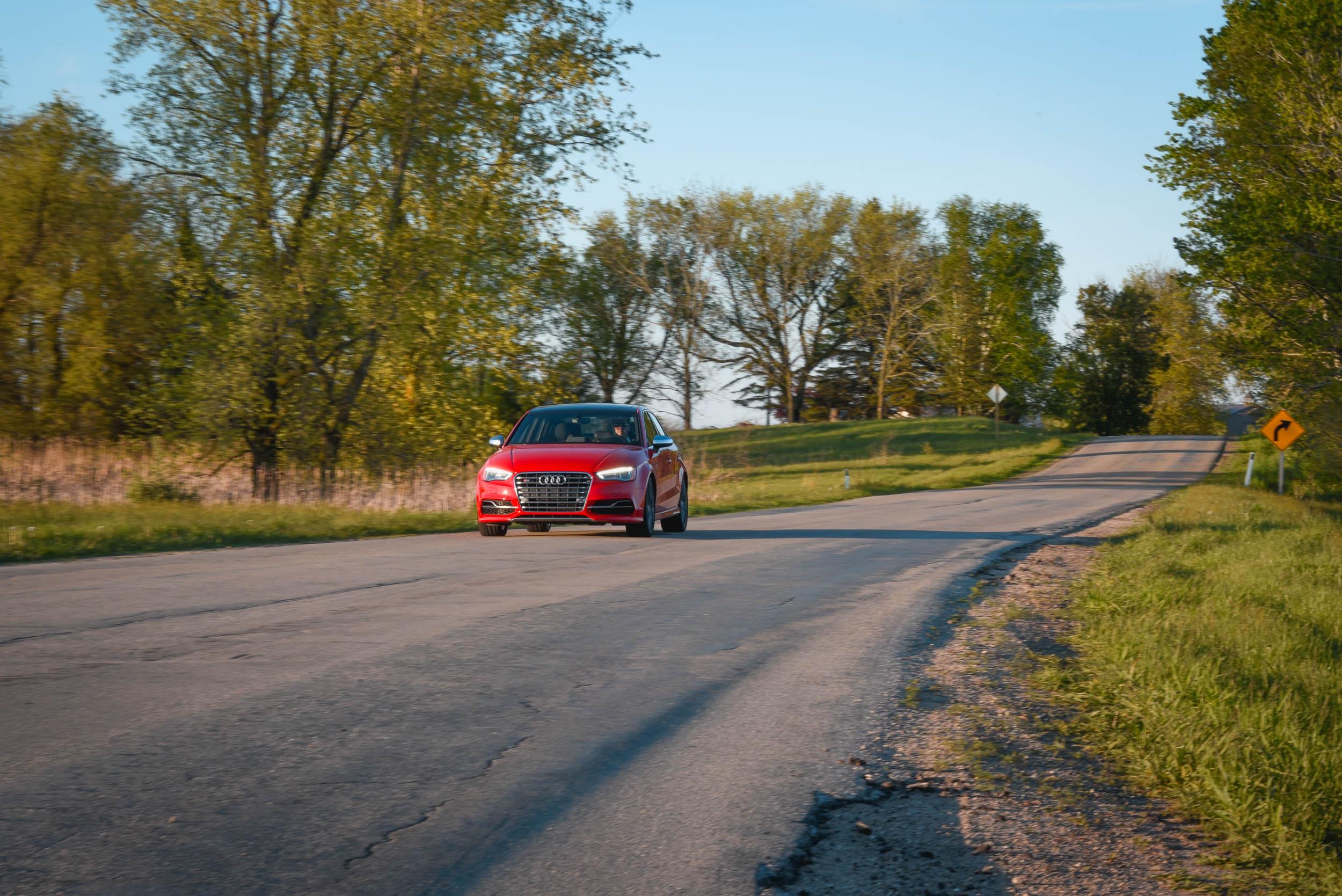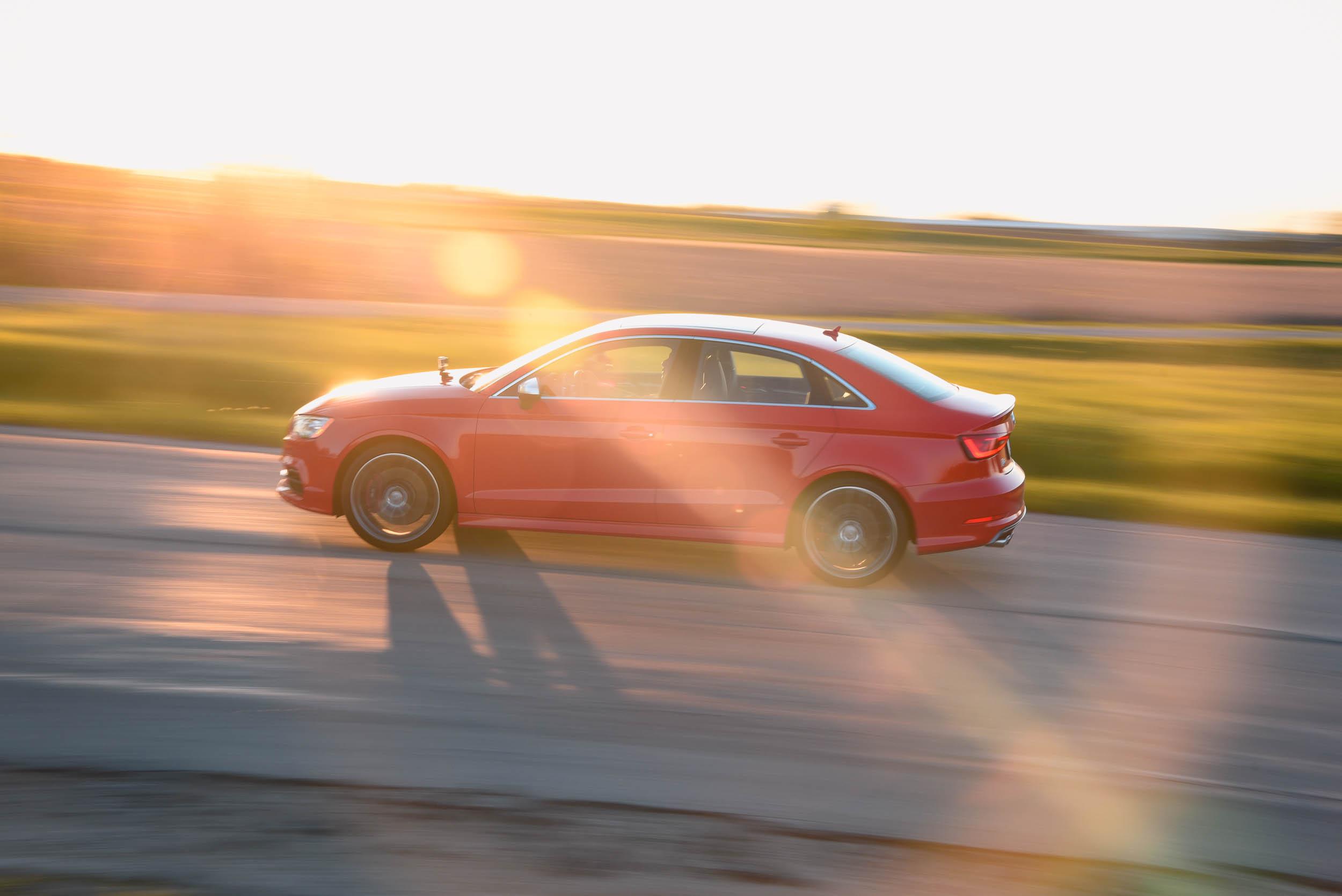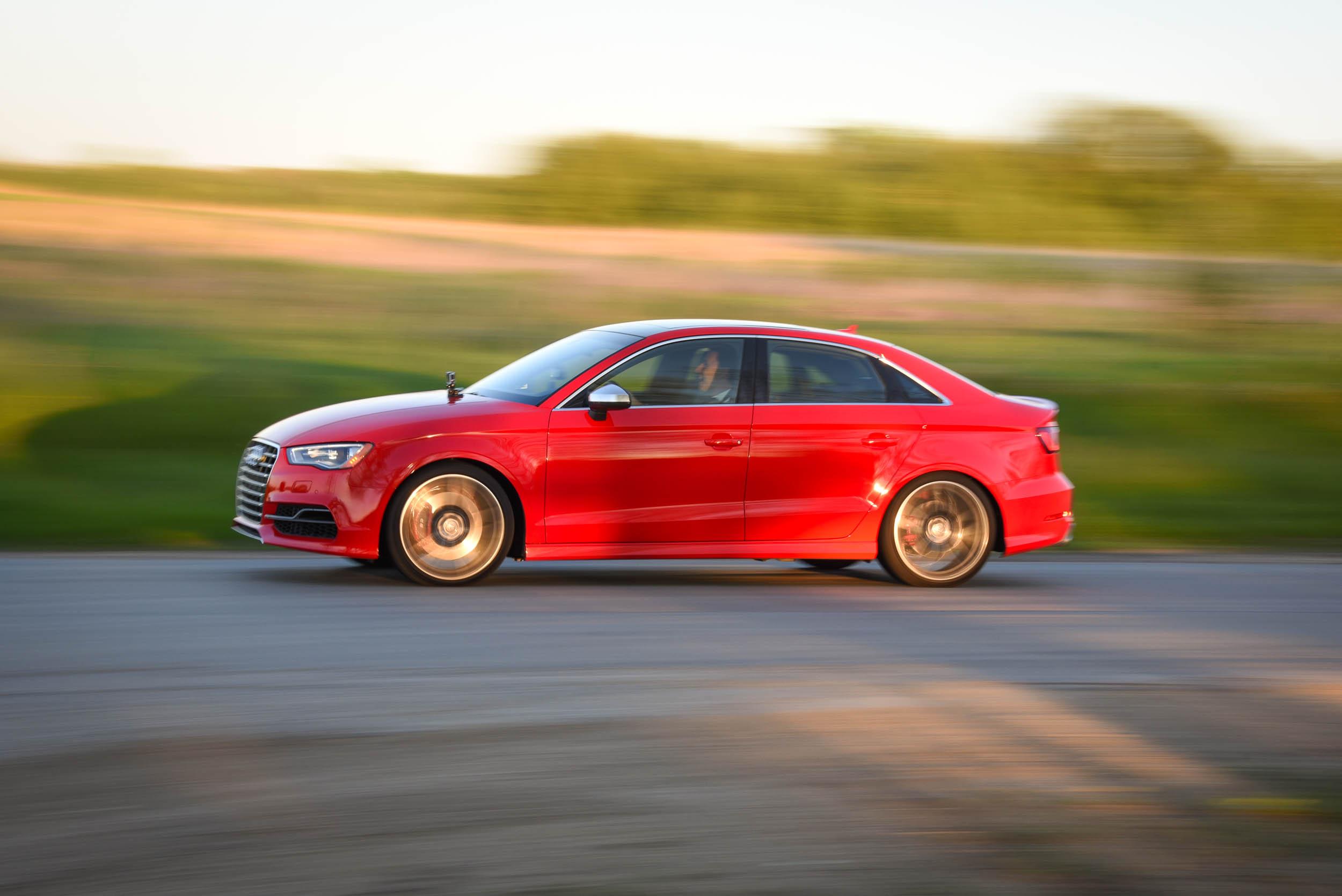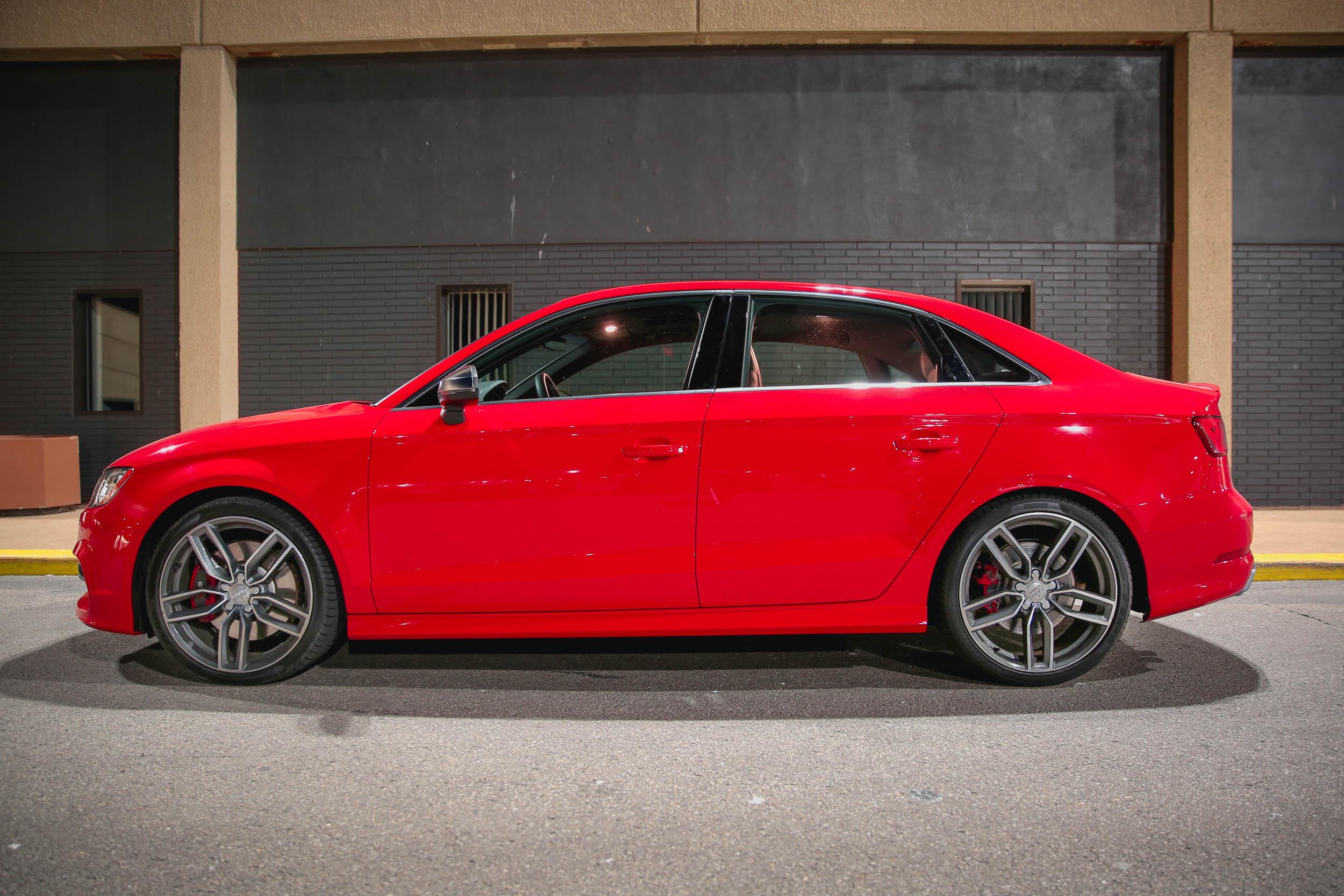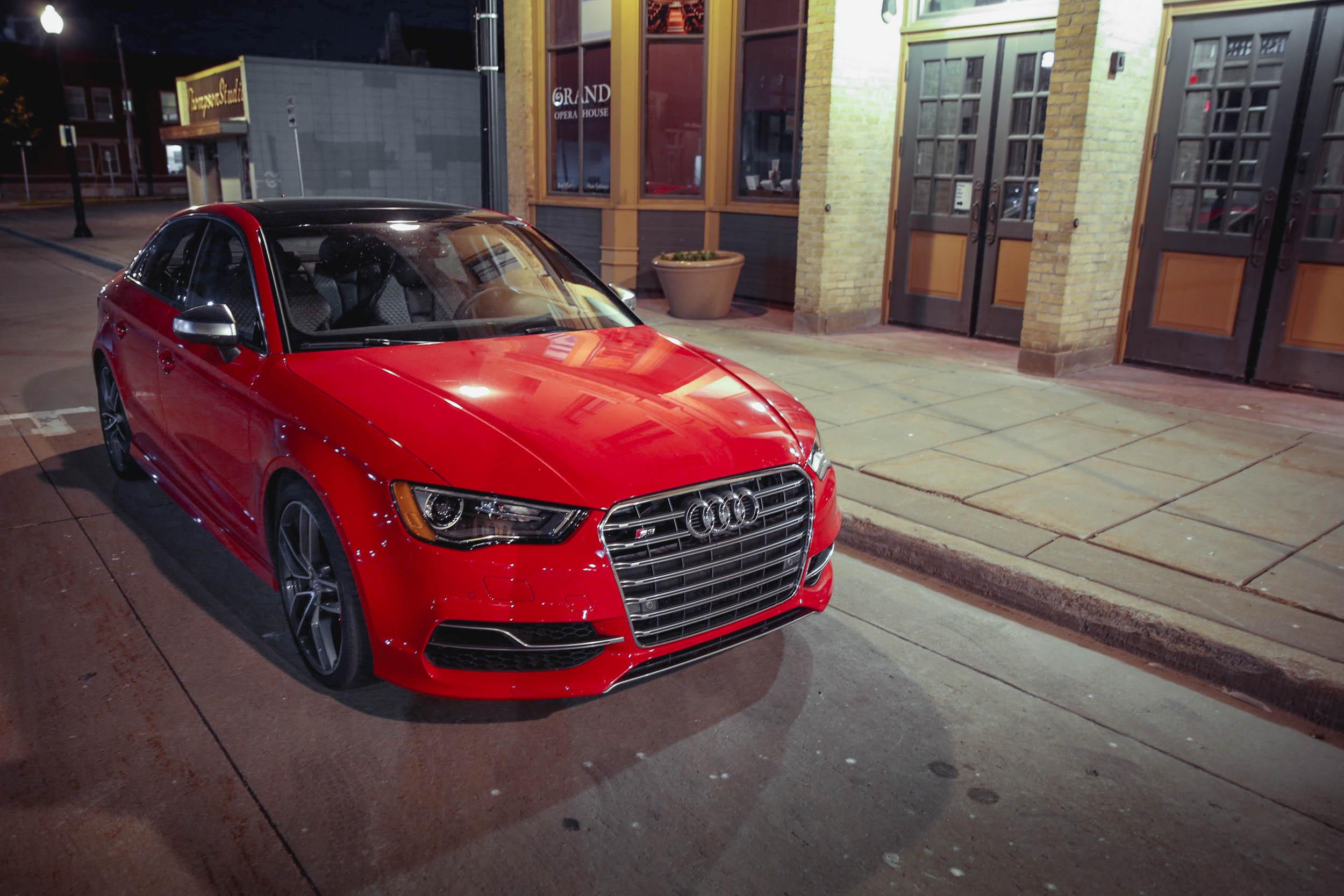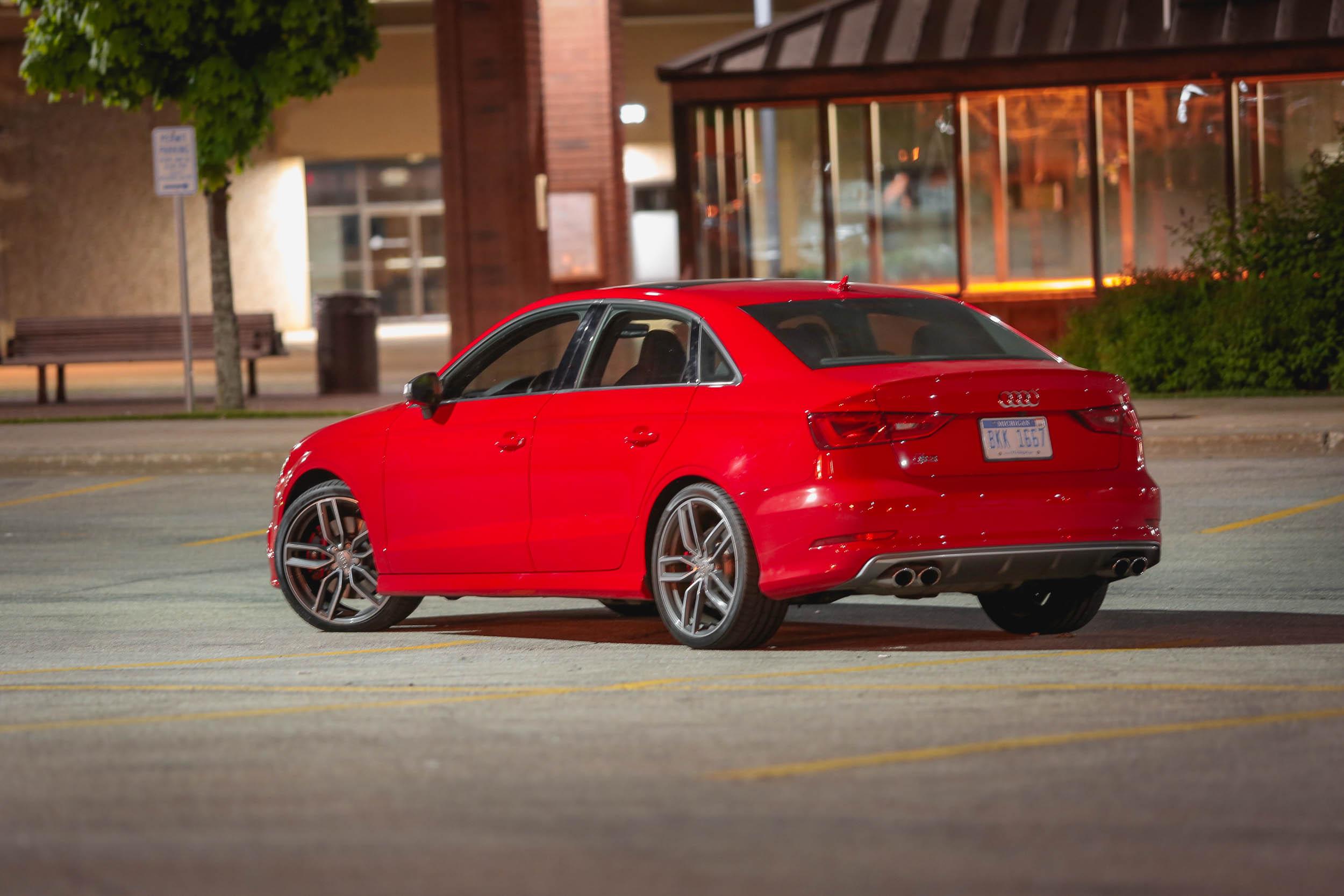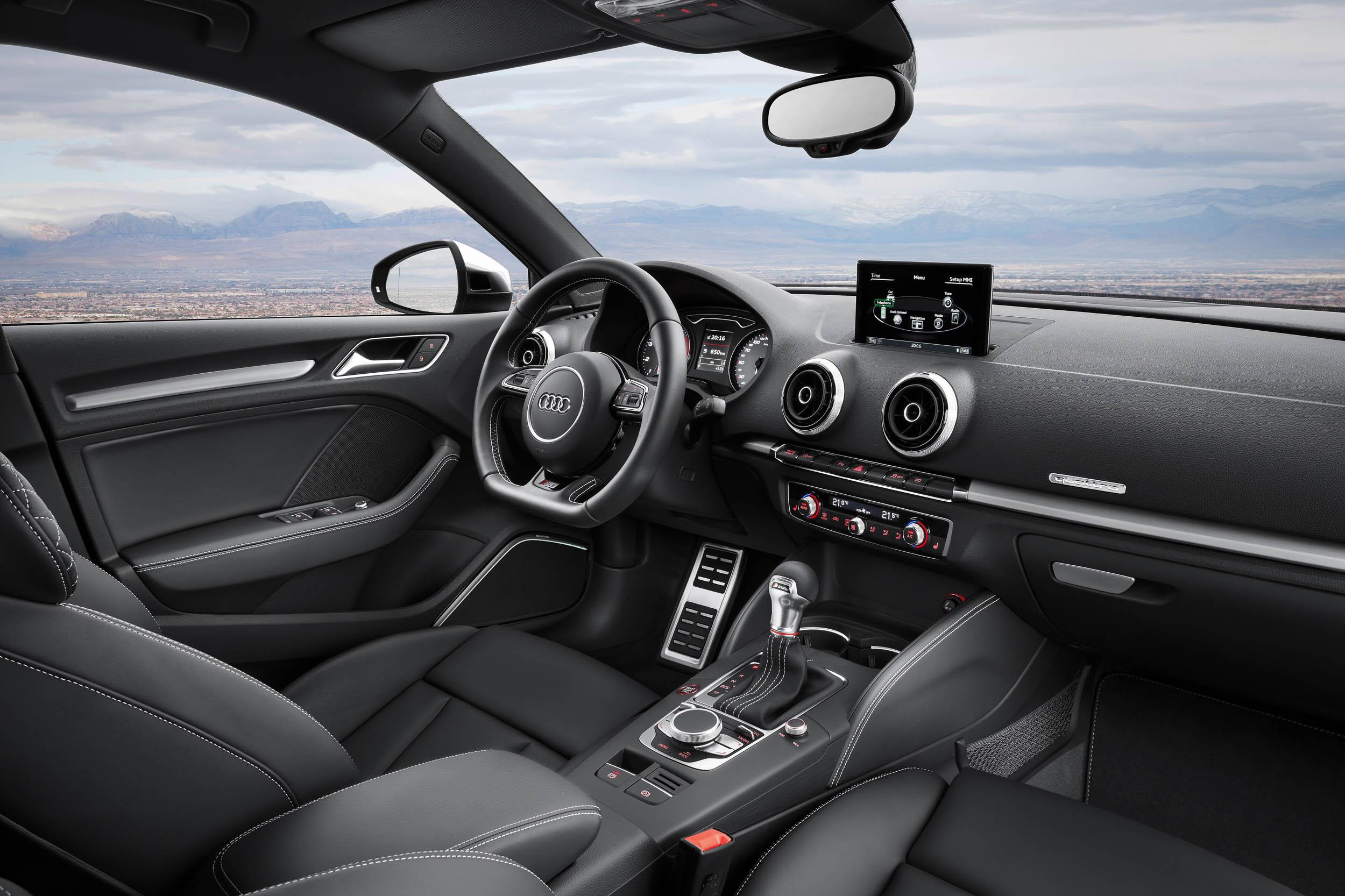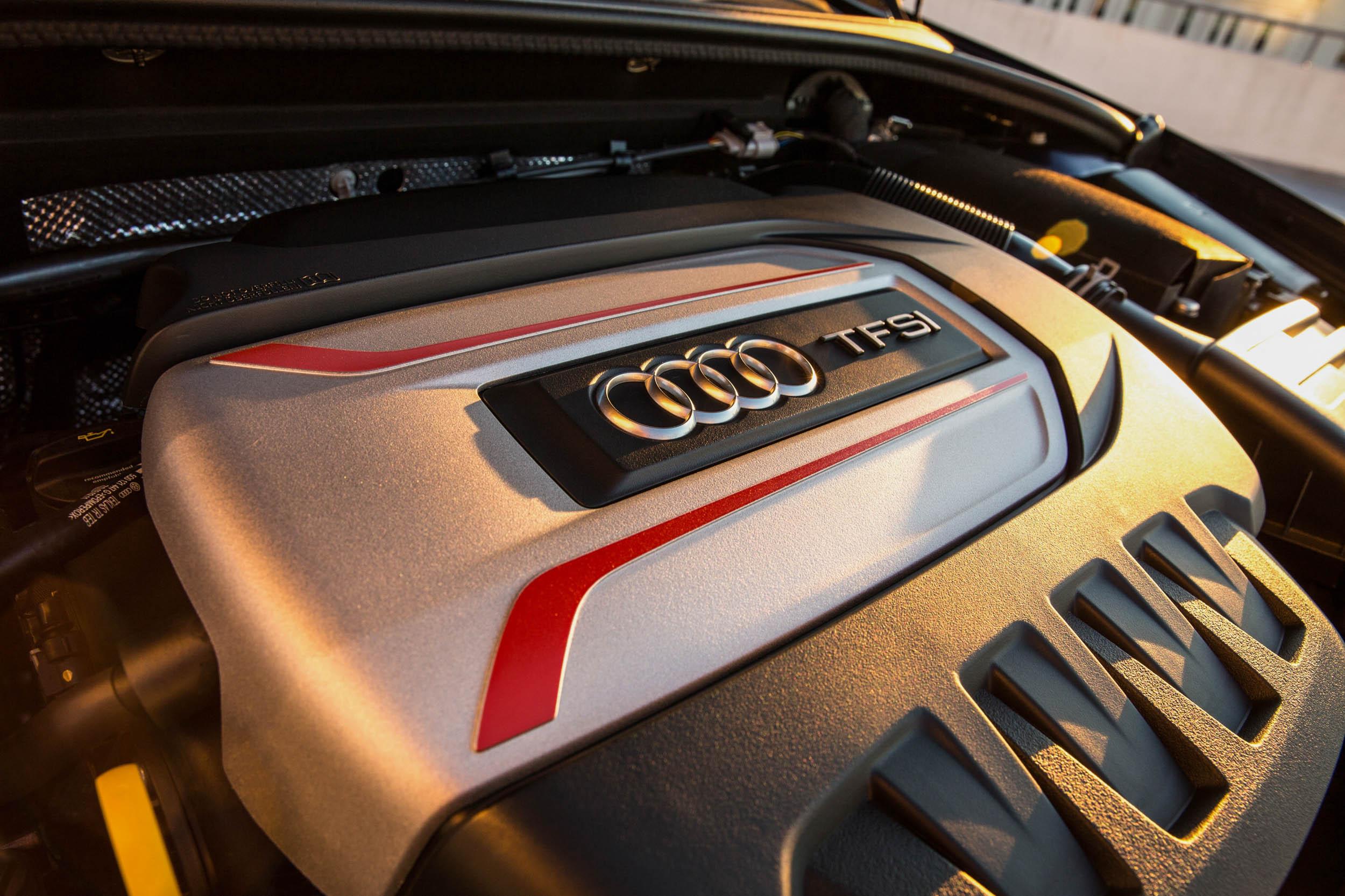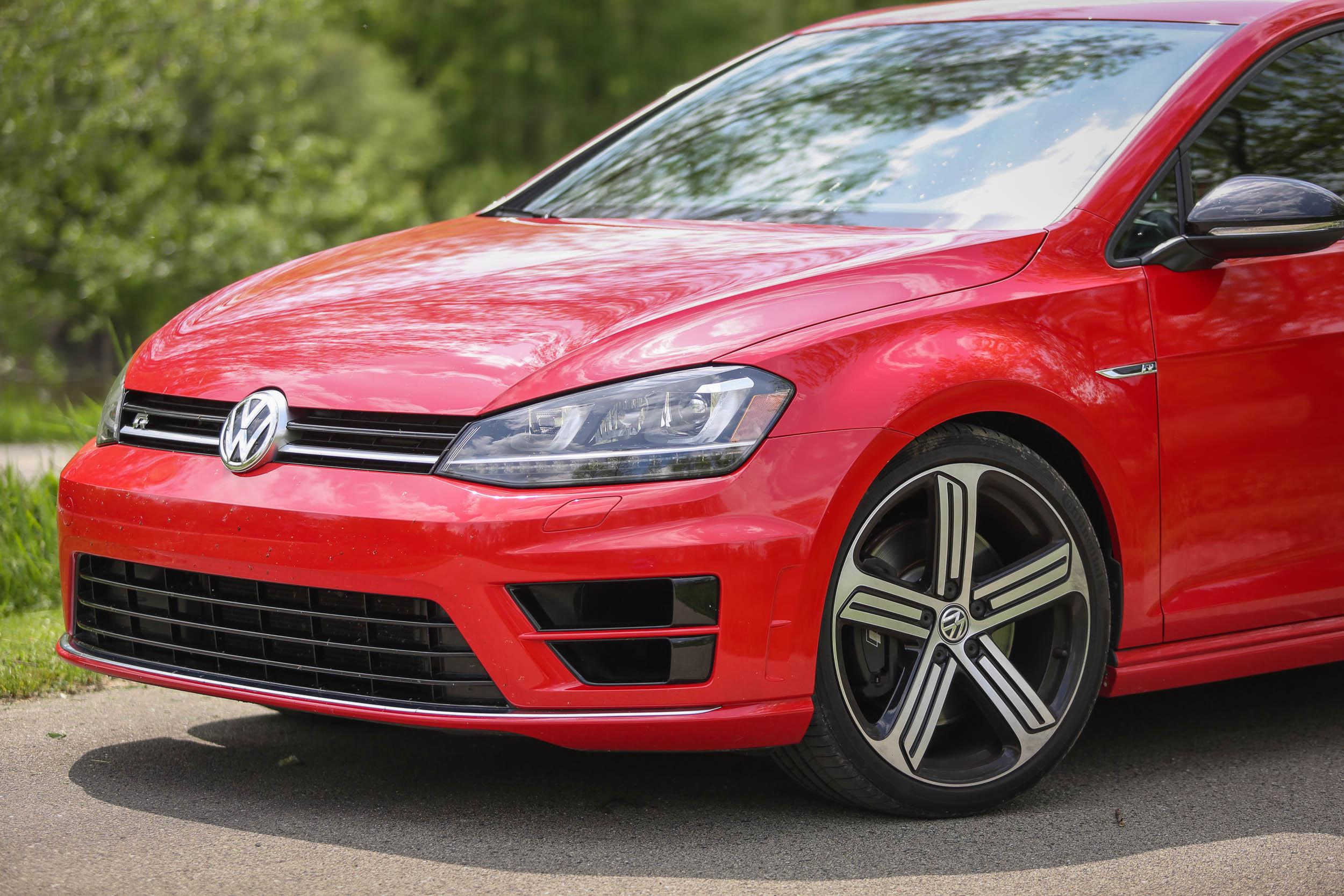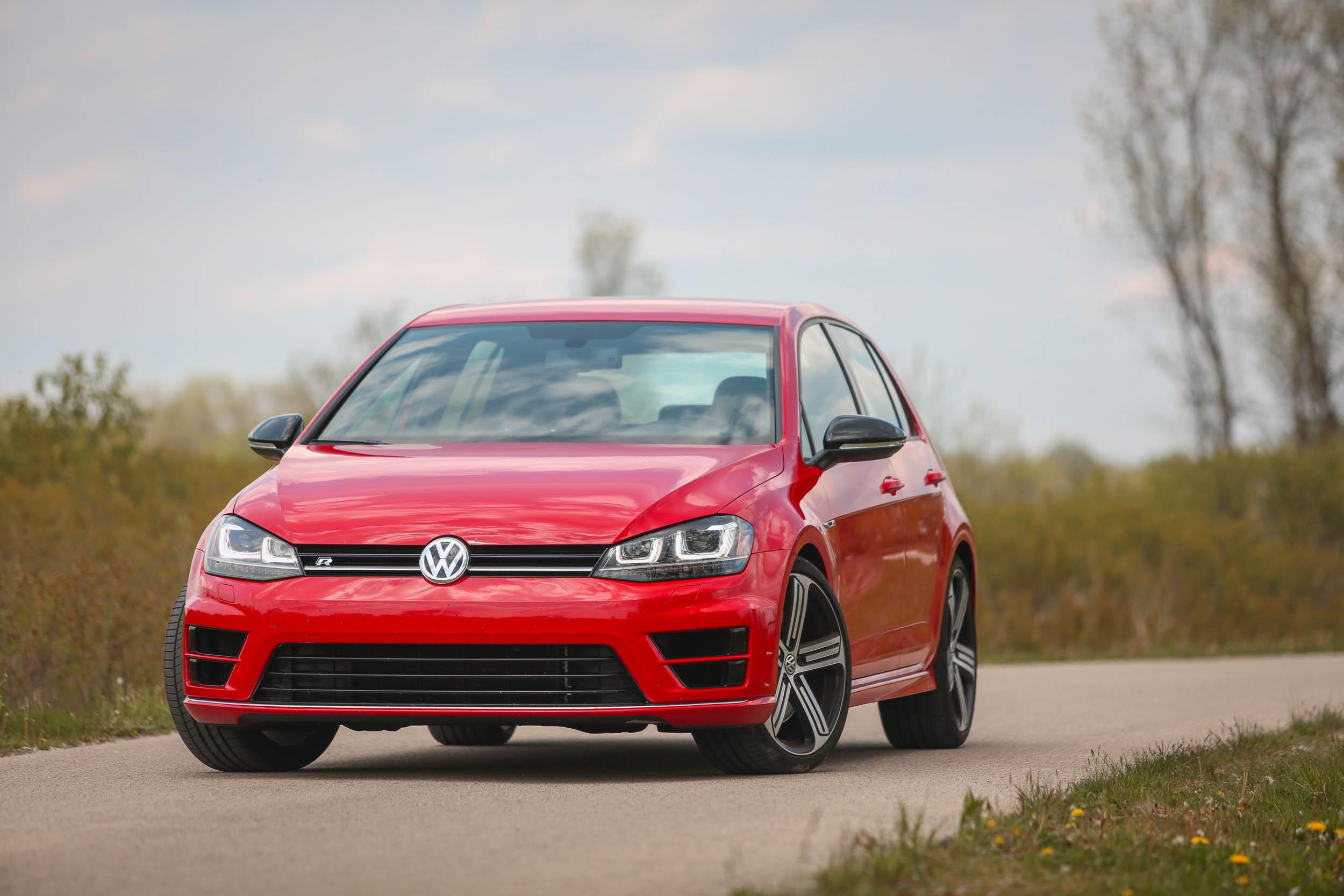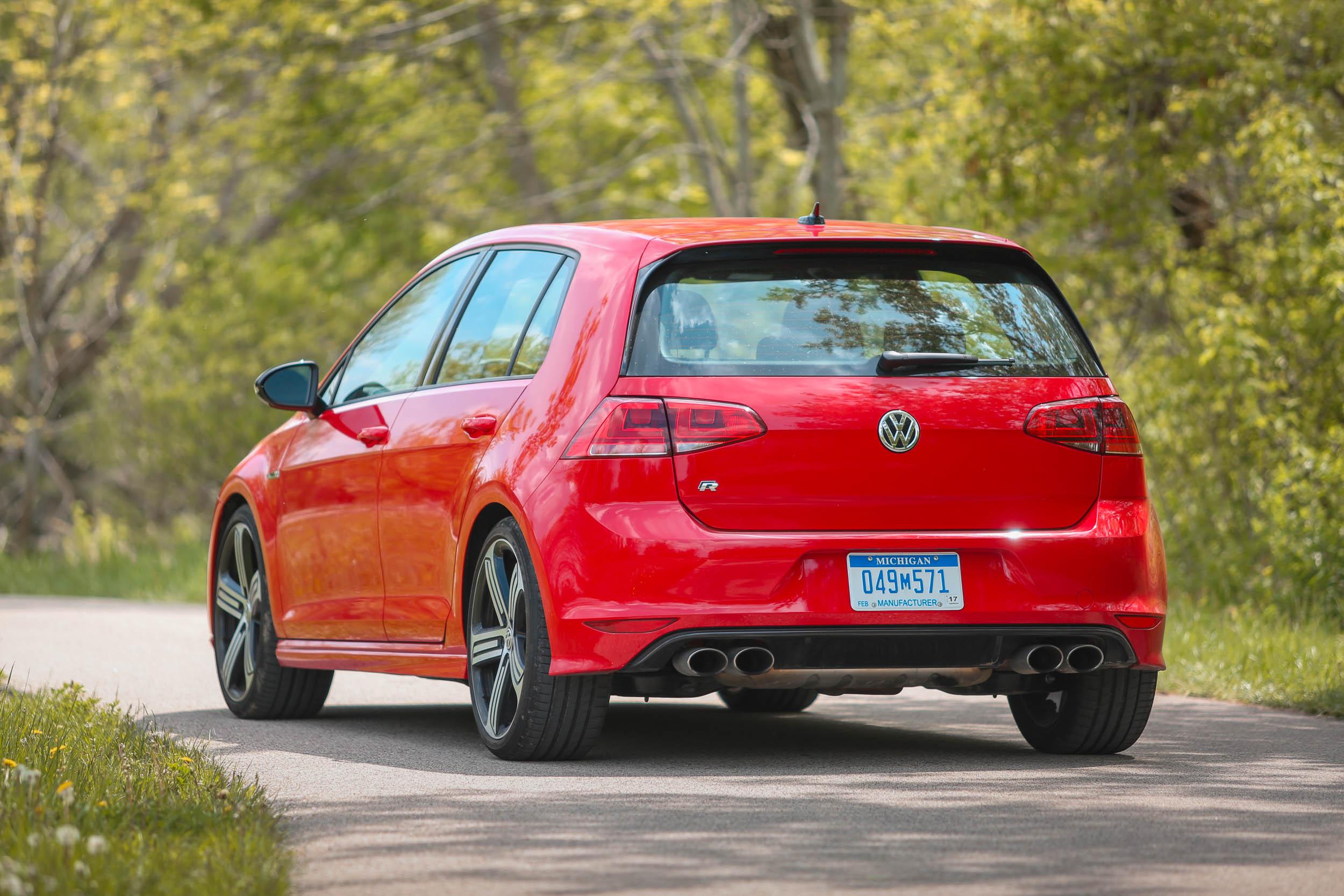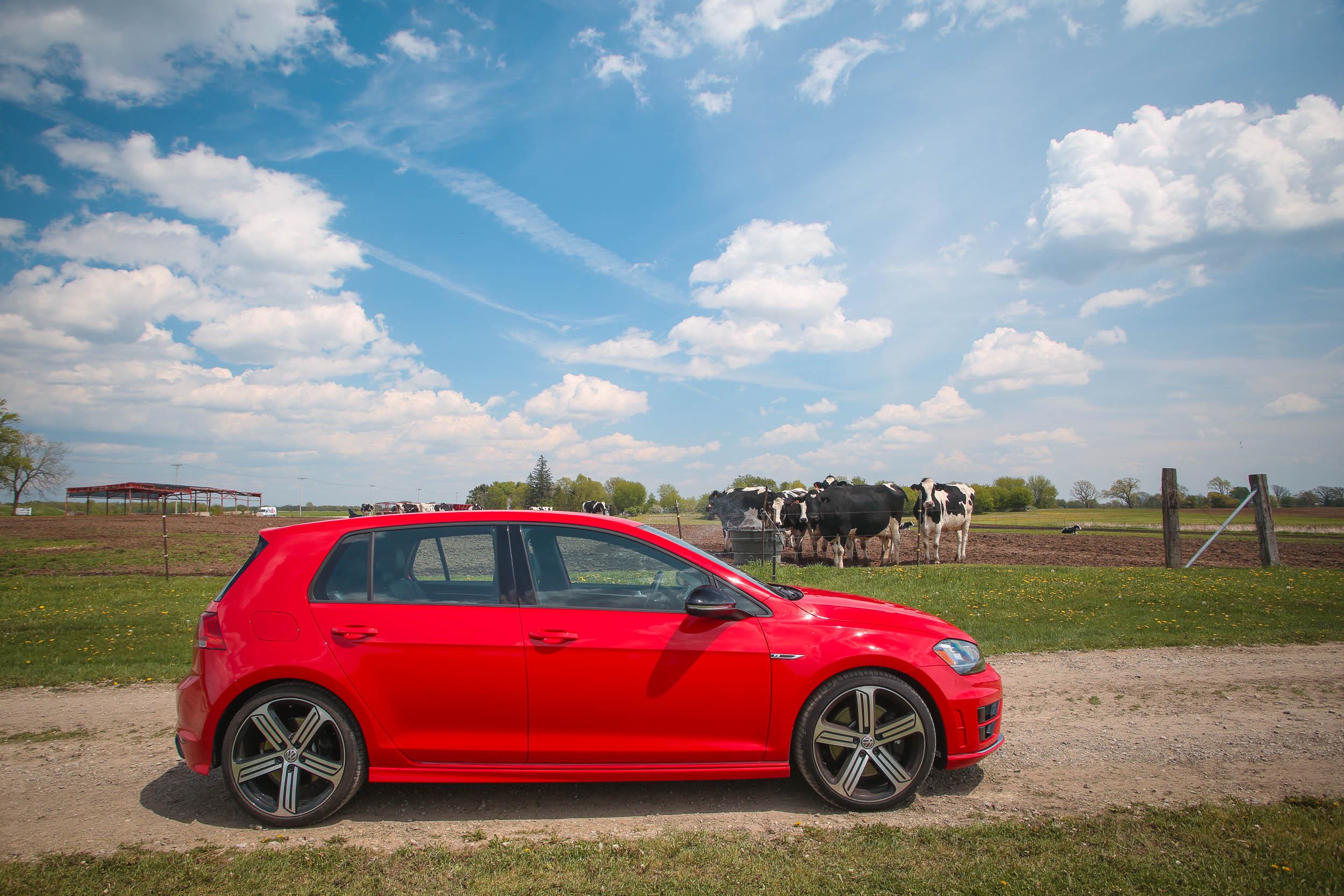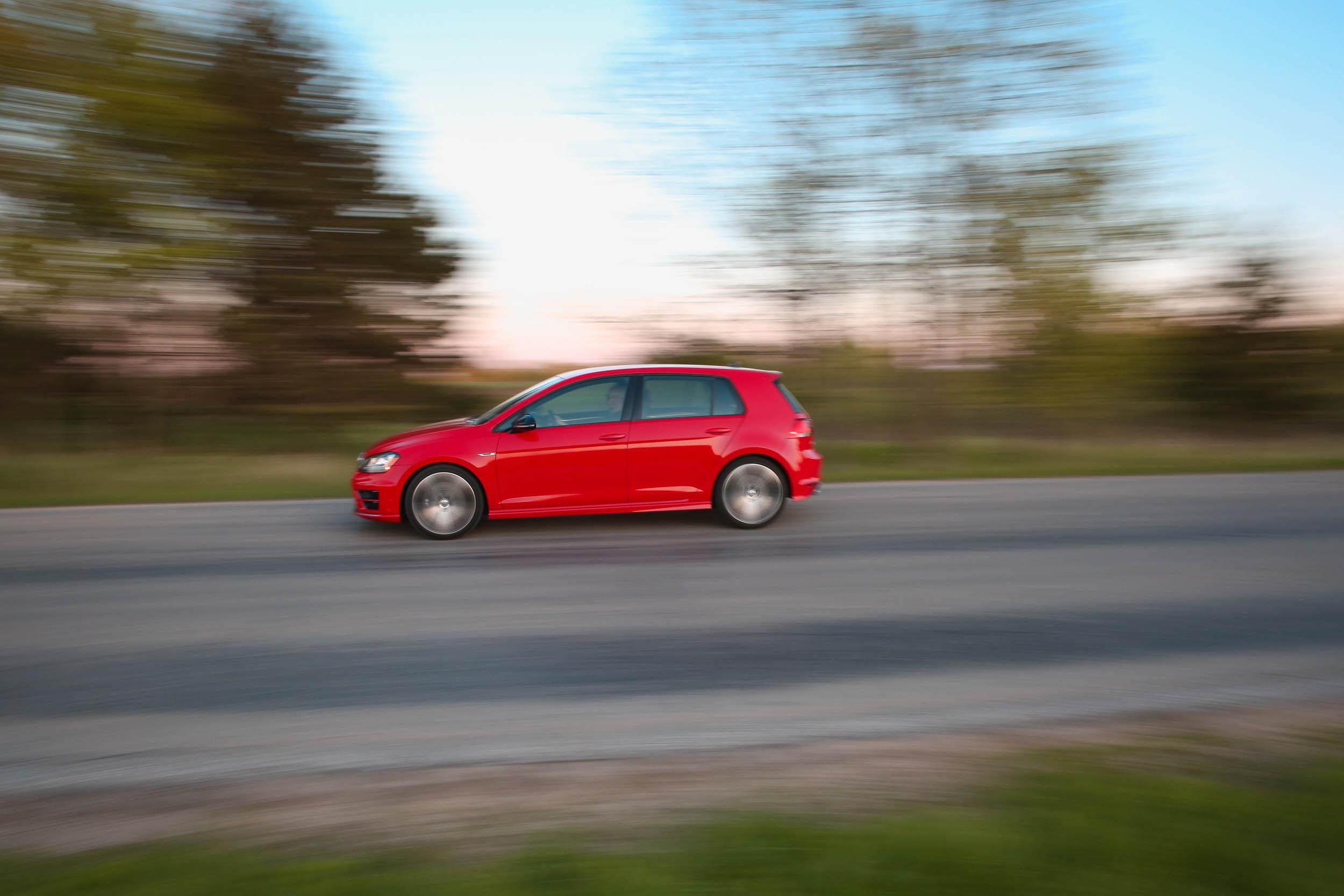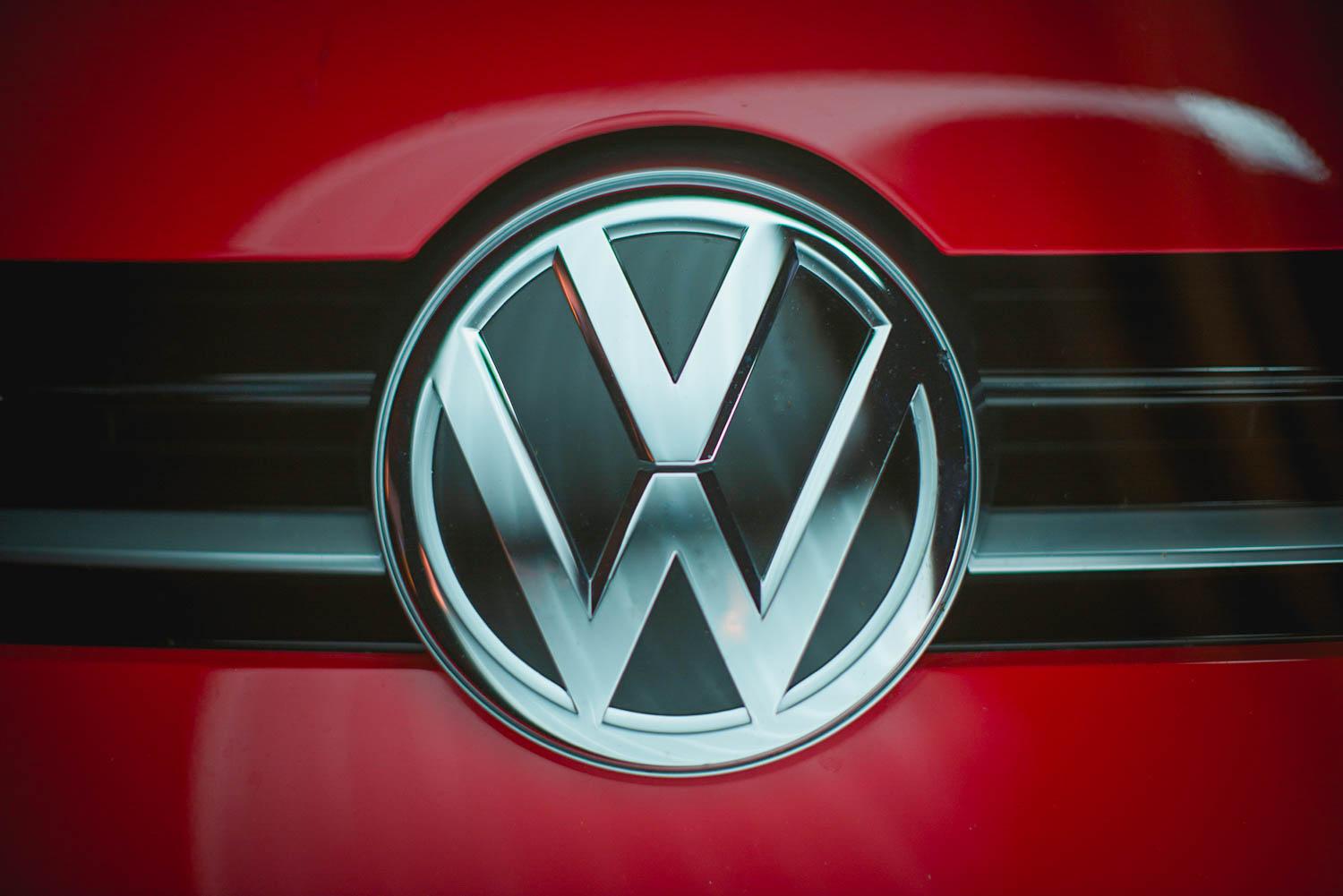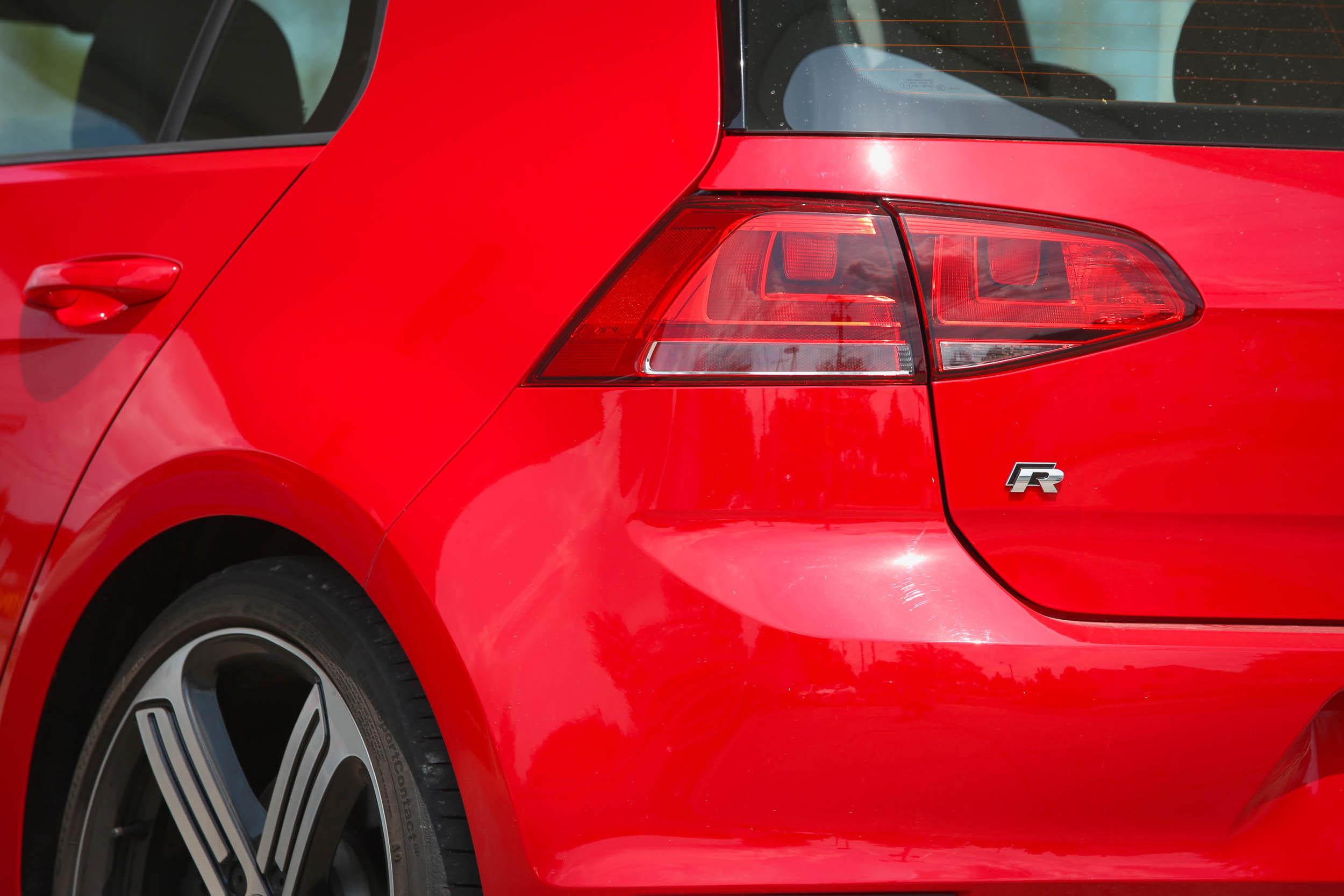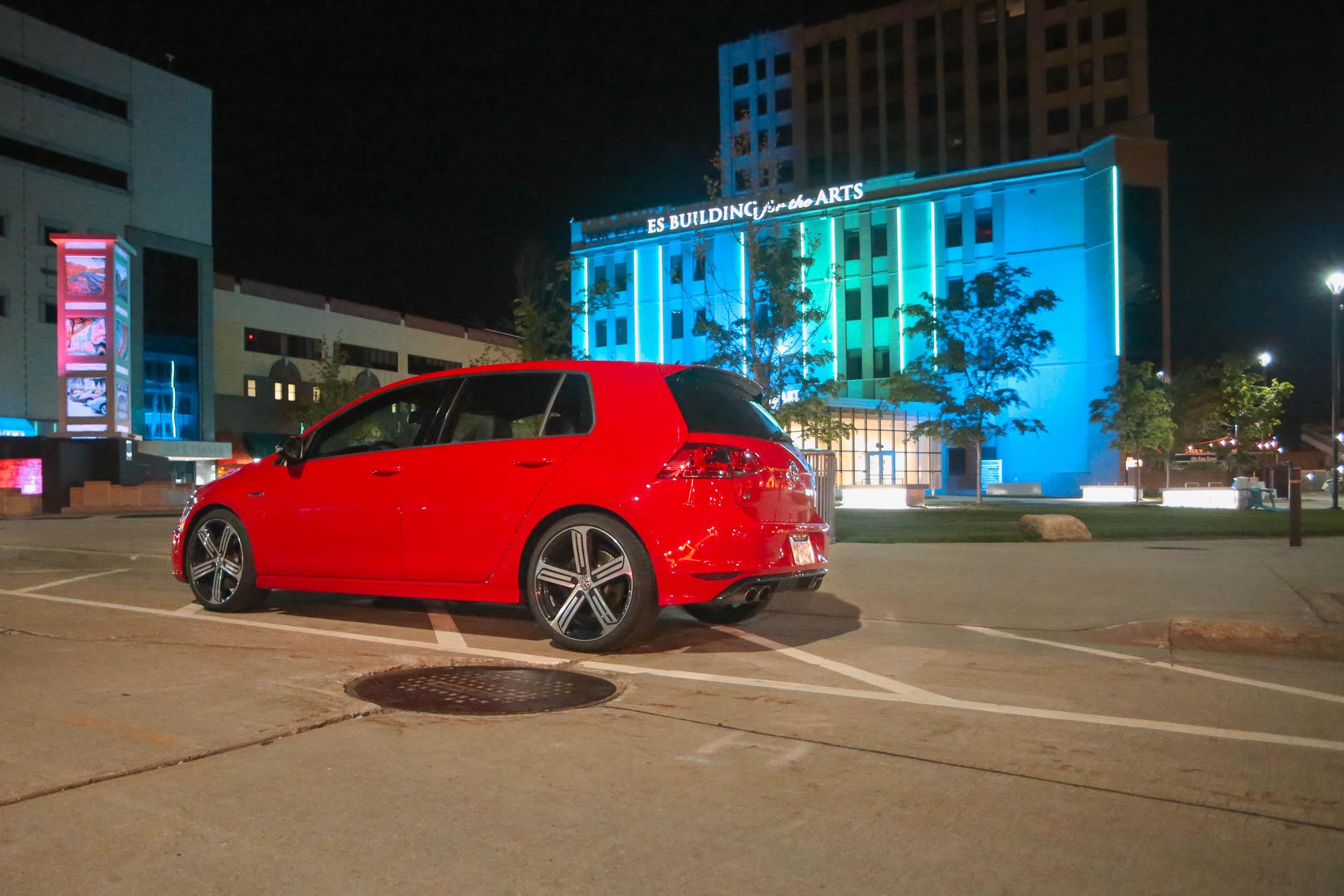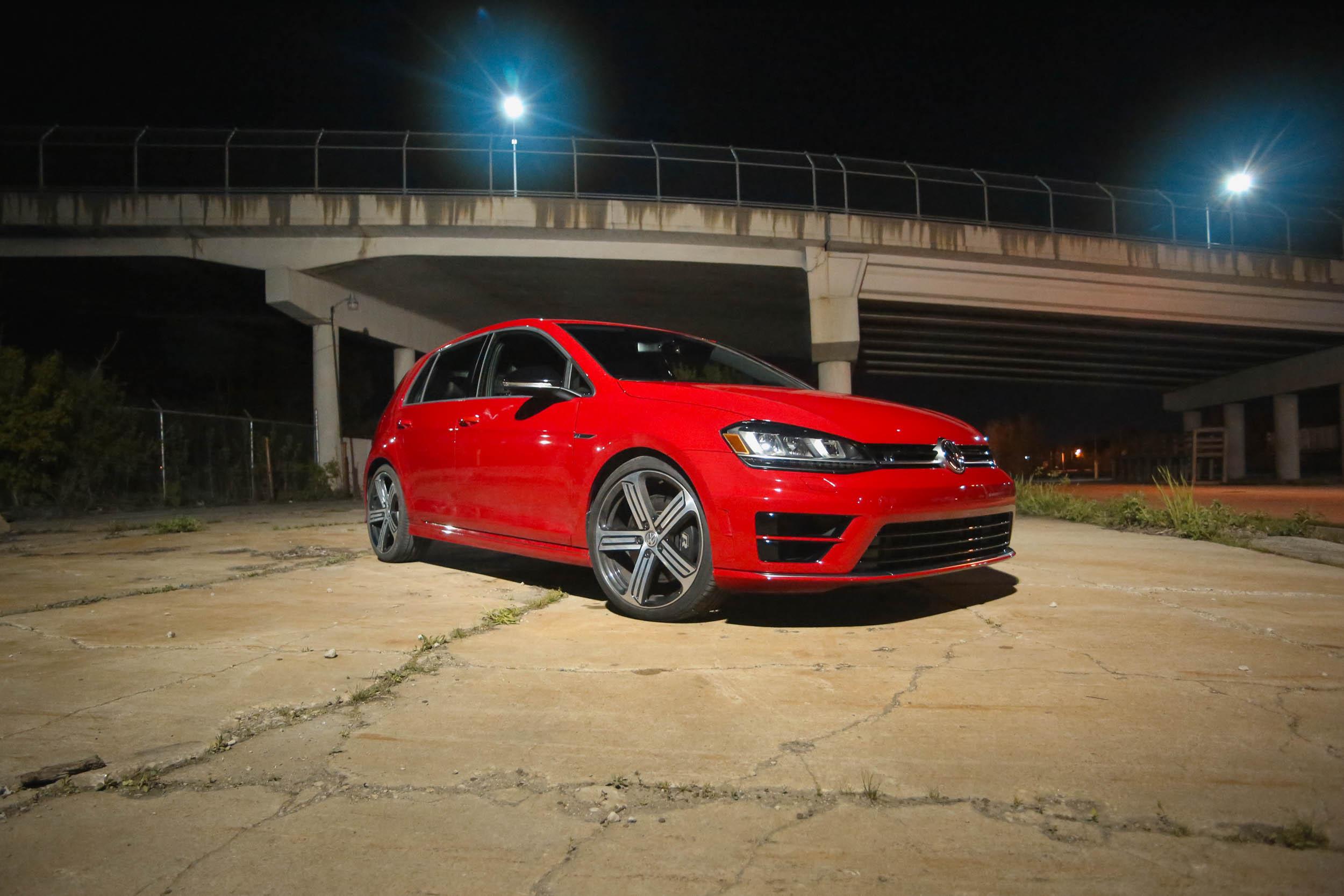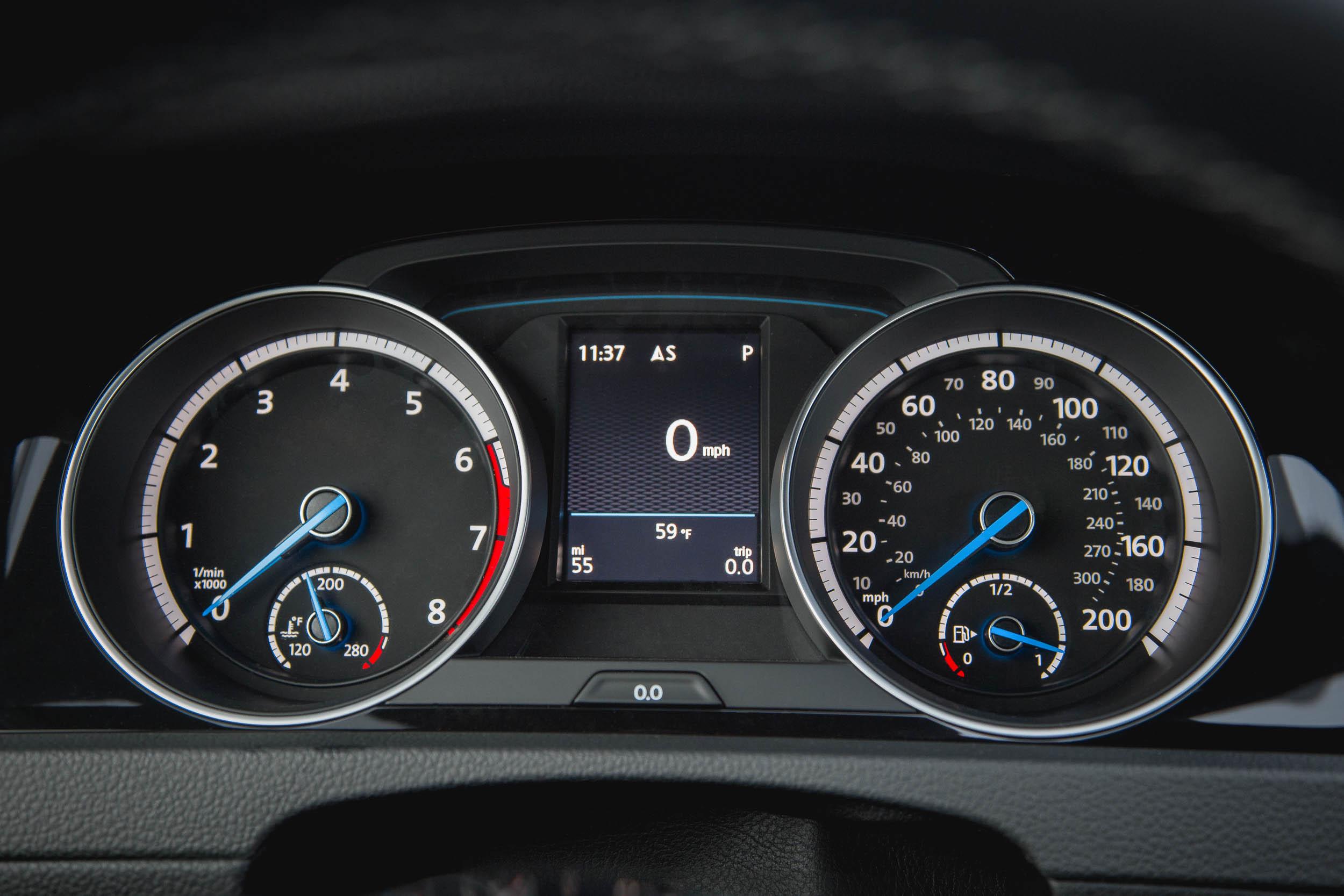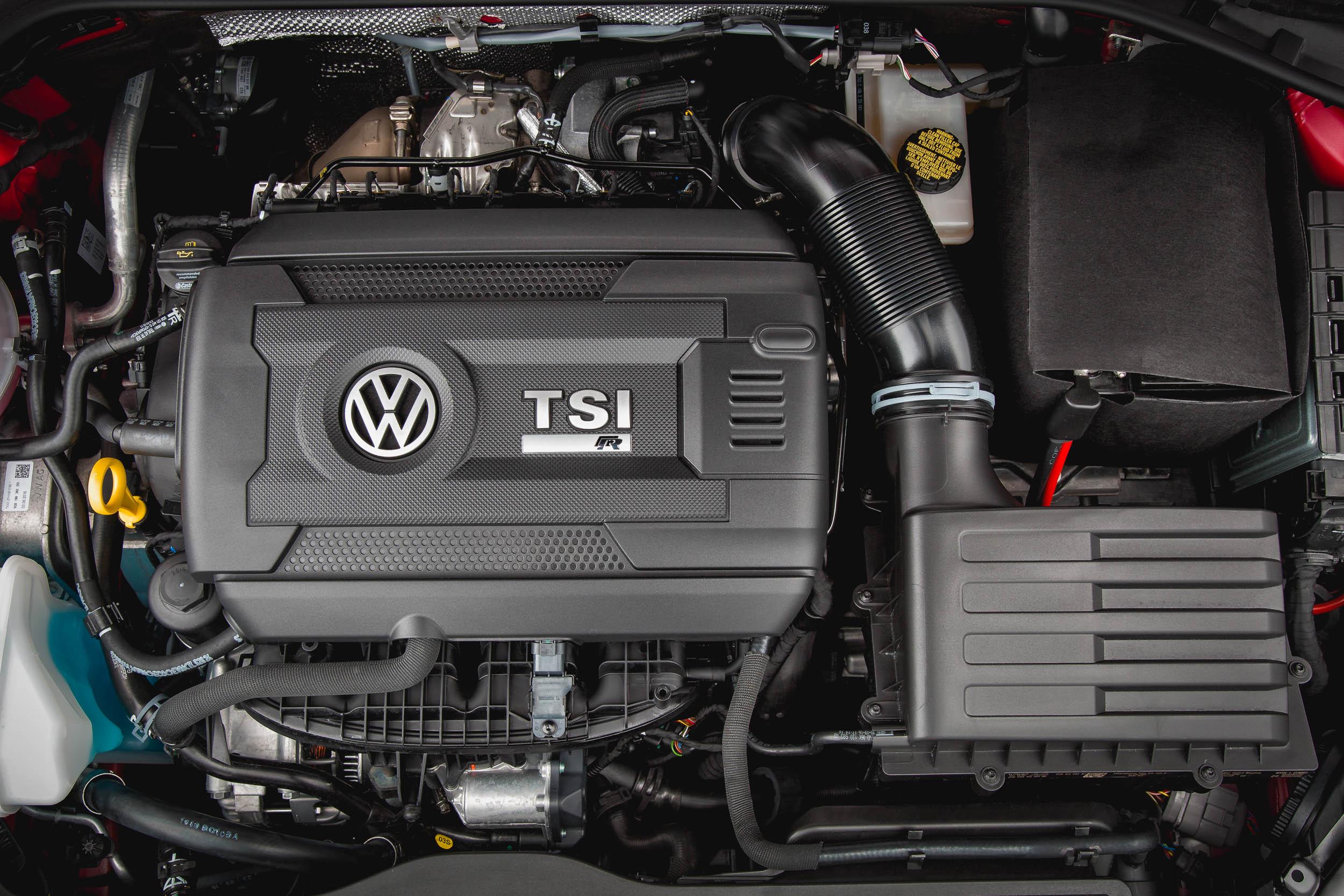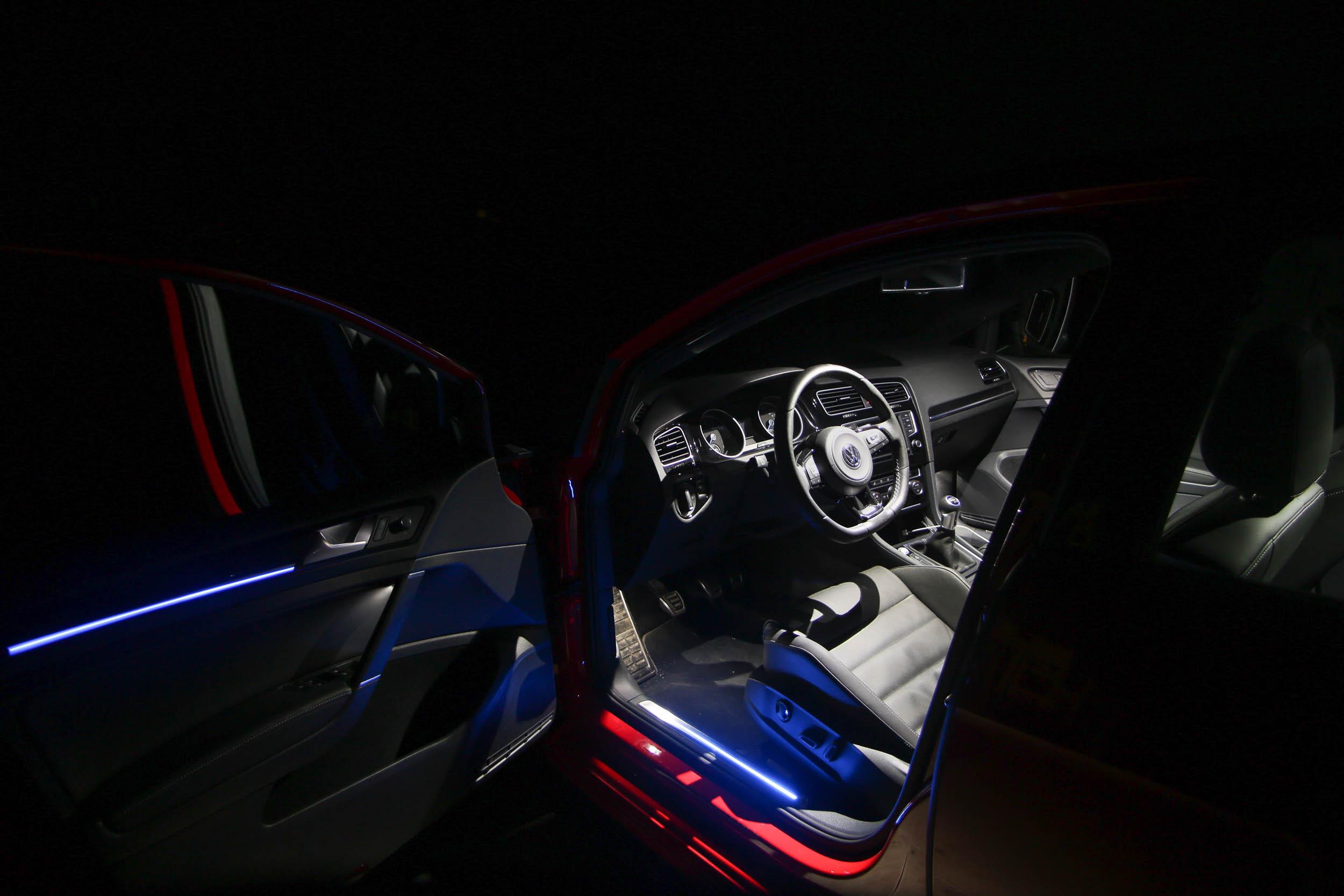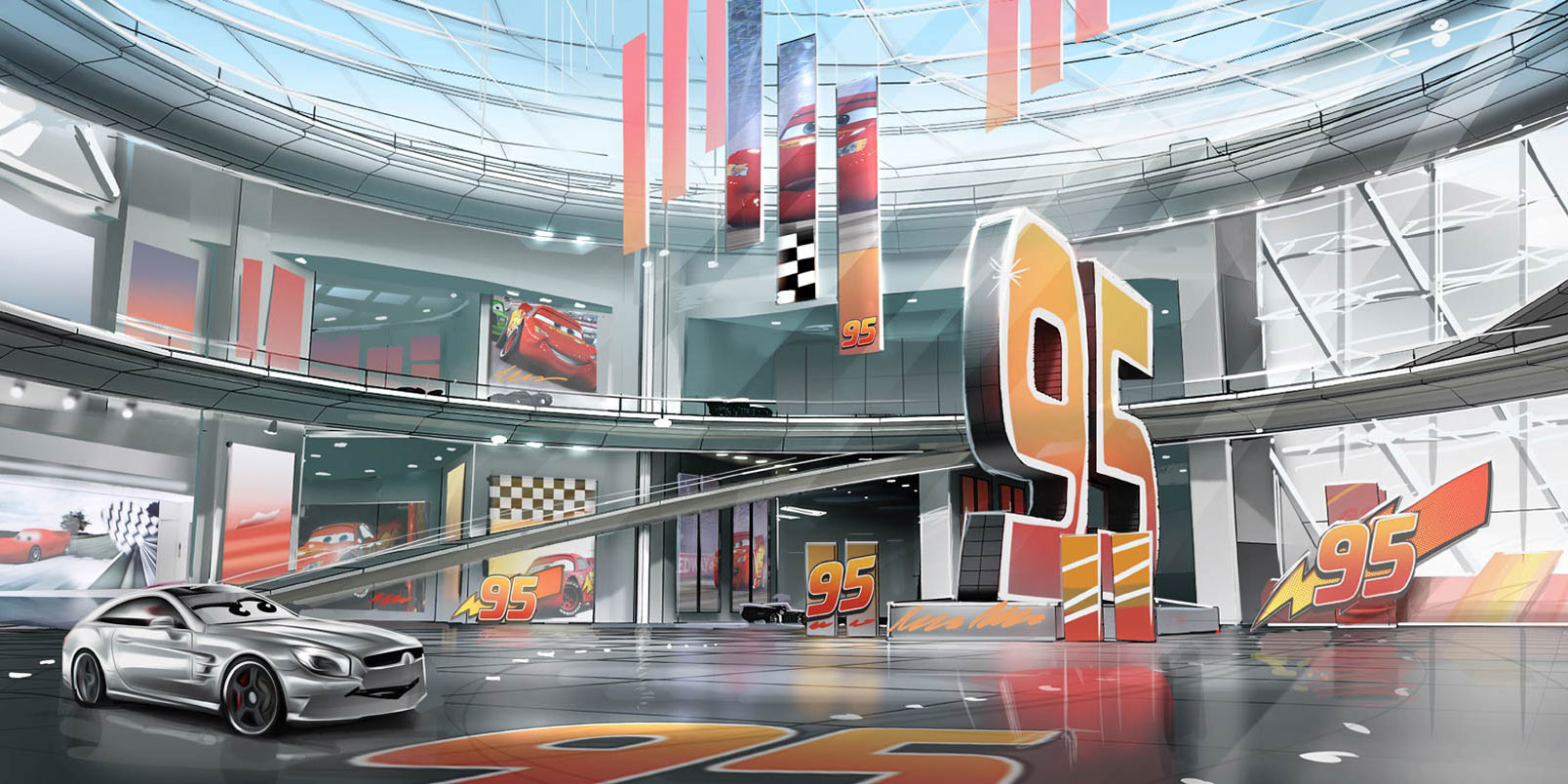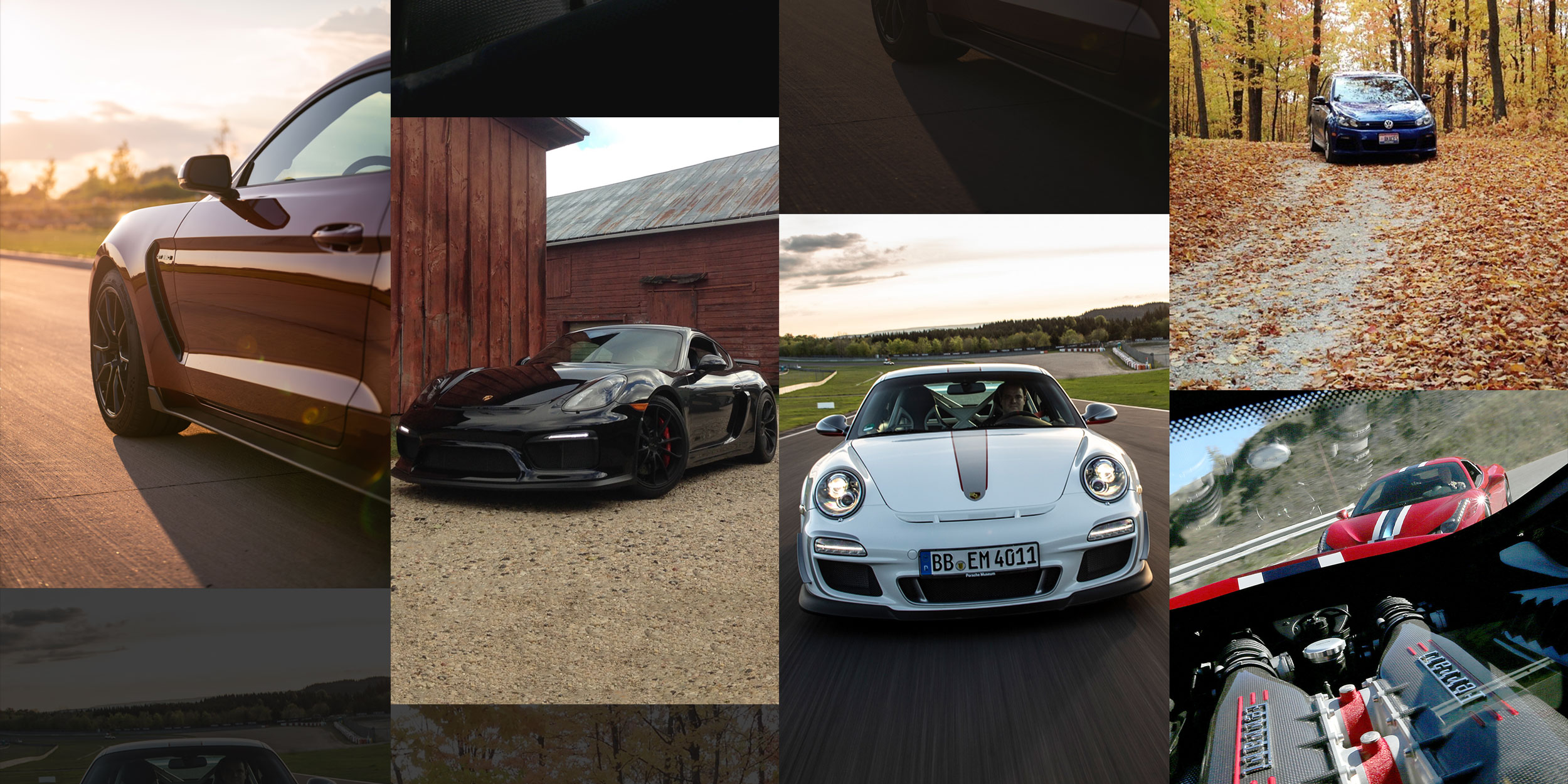2016 Audi S3 vs. VW Golf R: Is R greater than or equal to S3
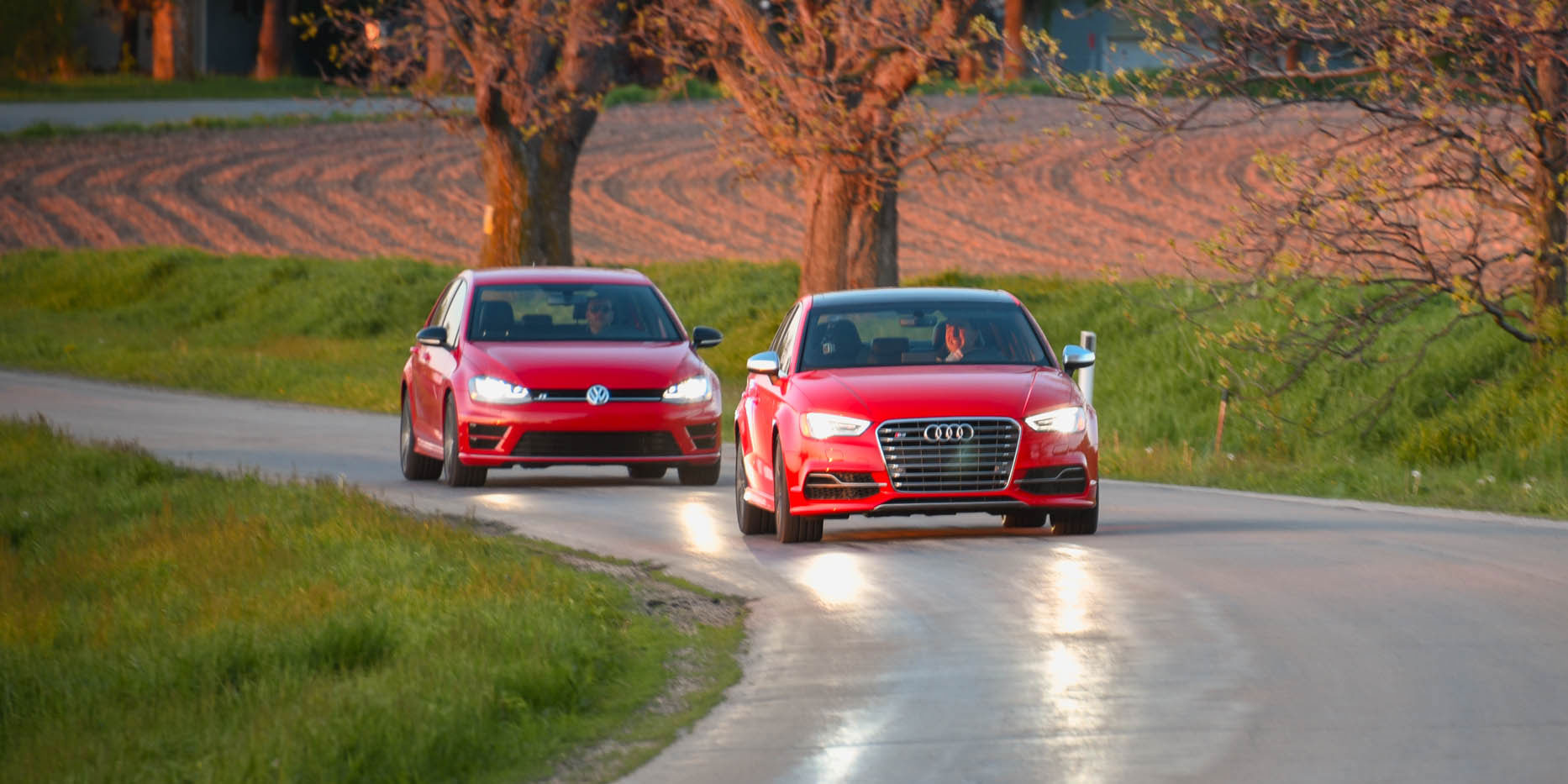
Words by Joe D.
Photos by Joe D. and Jennifer Jensen
I have to admit something to all of you: I am a Volkswagen “fanboy.”
I have owned so many VW’s through the years that I cannot count them anymore. Thus, it was with much glee when I was tasked with driving both the Volkswagen Golf R Mk VII and Audi S3 for a back-to-back comparison.
I grew even more excited when I discovered the Golf had a manual transmission compared to the DSG (direct–shift gearbox) in the S3.
LET’S GO GOLFING
My recollection of the last manual all-wheel-drive Golf I drove, a 2004 R32, is still burned in my brain. So, I couldn’t wait to get behind the wheel of the latest version of the hottest hatch from VW.
One thing that has always grabbed me about VW products is how solid and well-built they feel. Climb into an entry-level Golf or Jetta, and just touch it. Twist the knobs, hit the buttons, touch all the surfaces, and then head over to just about any other segment-matching car from another manufacturer and do the same thing. You will find that the VW feels more solid, and this version of the R is certainly no exception.
I feel the same way about VW’s manual transmissions. Their typical setup is a well-weighted stick with a light clutch and an easy take up. It is a confidence-inspiring transmission that helps me fall in love with the car even more.
The double clutch gearbox in the S3 is going to have its work cut out to swing my attention toward it.
VW TRIMMINGS
VW also has a positive history with trim and appointments in their special edition cars. They consistently furnish them with deep bolstered, comfortable seats and purposeful interiors with highlights such as brushed aluminum trim and, on the R, blue needles in the instruments.
My problem with this is the GTI interior has kept pace with the R models, and while this new R interior is very nice, it is not quite up to the bar that they set for themselves with special editions of the past.
Something new on the Golf is App-Connect. It basically turns the 6.5-inch touchscreen in the center of the dash into a mirror image of your smart phone. Once connected, several of the apps that work on your phone will work in the car and will hopefully help drivers keep their attention on the road — where it belongs.
Nitpicks aside, this is quite the accomplished car!
Passive entry means the key stayed firmly in my pocket while climbing in, and everything falls readily to hand once behind the wheel. The new larger touchscreen paired with analogue gauges makes the cabin a very nice place of business.
And the R is all business.
Time to fire up the turbocharged 2.0-liter four-cylinder and get to work. The engine is truly remarkable. It is economical, yet powerful (putting out darn near 300 hp in R spec!) and very tractable. The turbo starts spooling below 2000 RPM and provides a nice linear power-band.
A 4-BANGER?
I will admit that I was a little worried about this engine. I have been wondering why VW discontinued the 24-valve VR6 engine that helped to create the cult that follows the R models.
I owned a Mk5 R32 for a little while and the sounds car created were something to behold. In my mind there was no way a 4-cylinder could match the sound of the VR6.
So, I was pleasantly surprised by the sound of the over-achieving four-pot. It’s a different sound, of course — it’s missing 2 cans and has a turbo after all — but the throttle still made me feel confident that if I needed the power, I could manifest it without much drama.
If you’re up to shenanigans, stay above three grand, and you’ll have all the power you want all the time. Or you can short shift to do your best Prius impersonation and return relatively good fuel mileage.
RIDE AND HANDLING
The R has a unique suspension setup for Golf models and a lowered ride height. A Dynamic Chassis Control (DCC) is an option but was not fitted to our test car. The base suspension setup on the R is quite nice, however, and doesn’t try to rattle your teeth out.
The only bone-jarring bangs came from obstacles that would make you cringe — even in a Buick. I will say that the suspension is more taut than a base Golf, but if you wanted something that softly sprung, you wouldn’t be driving an R in the first place!
The R also has a Haldex AWD system that sends power to the rear wheels as needed, and it works exactly as advertised. When you brake, the R has a very Golf-ish feel, but once you apex and lean on the throttle, the rear wheels bring the front end back in line as the back comes around, and you are propelled around and out of the corner in a very non Golf-ish manner.
This car is definitely worthy of the “Hot Hatch” heritage without any argument from me, and I bet anyone who has driven the Mk VII Golf R agrees. With its evolution from a cute cuddly little Rabbit to the bold, muscular, stout, street fighter it is today, VW has yet another feather to add to its hat.
Well played, VW, well played.
THE DEBONAIR AUDI COUSIN
There is something very gratifying about getting into an Audi product. As the “luxury” brand of the VW Empire, it has been doing interiors right for quite some time now.
As I mentioned earlier, VW interiors are nice and the cars are solid, but that brand started as “the People’s Car,” so Audi clearly takes the lead on high-quality cabins.
The “3” in the S3’s name designates where it falls in the Audi lineup. 3 is smaller than 4, which is smaller than 5 and on it goes. Such is the intelligent no-nonsense layout of Audi’s lineup. A3, A4, A5, A6, A7 and A8, smallest to largest.
The “S” delineates that this is the “sport” version of the A3. Evolved from the “UR” series in the 1990s and continued on as “S” models starting in the 2000s, the “S” cars have always been the power hungry, acceleration greedy, driver-oriented editions of Audi’s models.
S3 EXPECTATIONS
Available overseas in two-door or four-door hatchback trim or in four-door sedan form all paired with a manual transmission; performance-minded folks like us had high hopes for these options in the US.
Instead, Audi delivered the S3 to the US only in sedan guise and only with a DSG.
But I will set my manual-driven-bias aside for the moment.
It may be the entry-level model of performance Audi’s, but the exterior is clean, crisp and clearly a derivative of the Audi family line. The interior, with its pop-up center screen, turbine-look vents and clean layout is elegant and easy to take in. This is a very nice place to be.
What immediately strikes me is that, while this car sits on a shared platform with the Golf R, there is something distinctly different about the Audi. I can’t quite put my finger on what it is that sets this car above the Golf R, but it is definitely different.
MUSIC TO THE EARS
Push the start button, and the same powerplant that is in the Golf R springs to life — but with a slightly raspier burble. The sound — yes, that. It sounds very nice for a 2.0-liter, and what’s more, it changes depending on which driving mode you are in.
The different driver settings are an interesting touch — especially for a car in this class. Drivers can choose between Comfort, Auto, Dynamic and Individual. And here’s the kicker: The S3 has magnetorheological dampers!
When I first hit the road I, of course, selected Dynamic Mode. The S3 responded by holding shifts longer to eek every ounce of power from the turbocharged four. The steering was quick to respond to my inputs all while the chassis rewarded my hind parts with transmitting every little bump in the road.
Then I hit Comfort and, wow, what a difference. The bumps in the road literally disappeared, and short shifts were the order of the day. Individual Mode lets you adjust the steering, throttle response and softness of the suspension to your own liking.
The S3 pulls significantly harder than the Golf, even though it tips the scales a few pounds heavier than the Golf. Oddly enough, it is also more fleet of foot. Responses from the helm of the S3 are quicker. Maybe it’s the magnetic ride control, but the chassis is also more controlled.
Overall, it seems the sportier of the two.
TECH TALK
Then there’s the technology — some of it great, some of it intrusive. Take the Bang & Olufsen sound system for example: Excellent use of technology!
It is tailored to the cabin and sounds impeccable. I feel like I’m repeating myself, but for a car in this entry-luxury class to have such a sound system is fantastic.
Plus, the Audi MMI controller has improved drastically over when it was first introduced, and with the high-mounted center screen, it works well in this application.
I love that Audi has kept basic controls, such as those for the HVAC system, as stand-alone buttons, and I don’t have to go digging through menus to change the temperature or fan speed.
Then there is the other end of the spectrum: driver aids.
Many of these “electronic assistants” are never truly disabled, even when turned off by the driver. Traction control, for example, will quickly pour a cold bucket of water over the most enthusiastic driver’s smoldering desire to perform skid induced wheelspin and tire smoke. Who doesn’t love a Quattro-inspired, four-wheel drift or burnout?
Apparently, the traction control system in the S3, that’s who.
Another example of unnecessary intrusion is manual mode with the DSG. The double-clutch gearbox is a work of art and functions better than I ever imagined it could. Lighting fast shifts accompanied by blats and burbles from the engine and exhaust are goose-bump-inducing moments.
But just as you are approaching redline and want to hold it for a second so you can have the perfect slam-bang moment into the next gear, the car shifts for you.
Really? Why? This doesn’t happen in the R8, so why is it needed here?
All in all, the S3 is an elegant and comfortable place to spend time. It has the chassis, transmission and engine to put an ear-to-ear grin on your face when you need to blow off some steam or need to work through a traffic jam.
But is it better than the Golf R?
THE VERDICT
Although these cousins are built on similar platforms, I realized after my time with them both, we are really talking about an apples-to-oranges comparison.
The Audi is an “S” car. It is built on a heritage bred from decades of revolutionary racing innovations and a lineage that has catered to the finer things in automotive life. This car, although the smallest and most economical platform Audi offers, can’t hide what it truly is: a well-trained boxer in a custom fit suit and tie.
The Golf R, on the other hand, is a direct descendant of the hot-hatch revolution that started in the ’70s. It is craved by many enthusiasts as a more affordable, easily tunable platform that outperforms many cars in its segment.
The Golf R may not be not the fastest, but it is still the best-combined package in the hot hatch market on the road today.
In this type of comparison, you might wonder if the Audi warrants a price tag of almost $10k more than the R. The answer is: YES. Which becomes very clear after getting seat time in both.
They are both very good at what they do in their categories, but they truly reside in differing markets. If given the choice, I would take both. If I had to pick just one, I would take the S3 — hatch or not — and most of you probably would, too.
Originally published in 2017.
